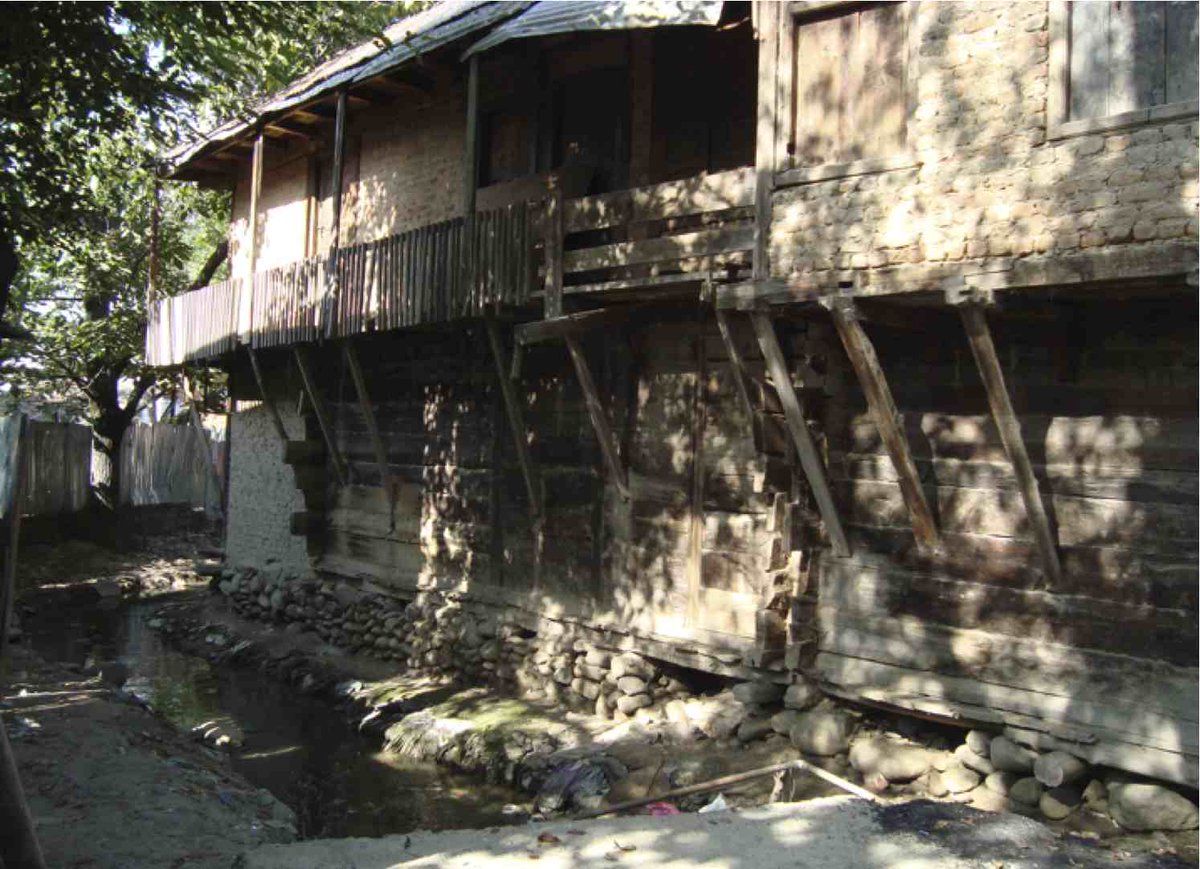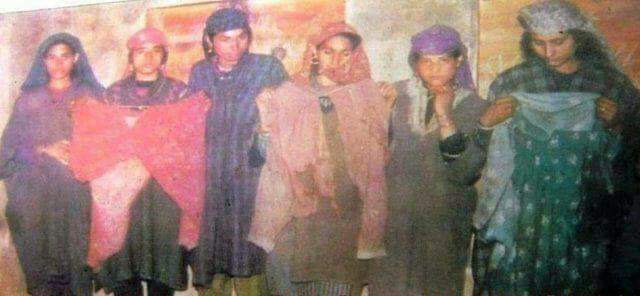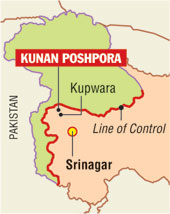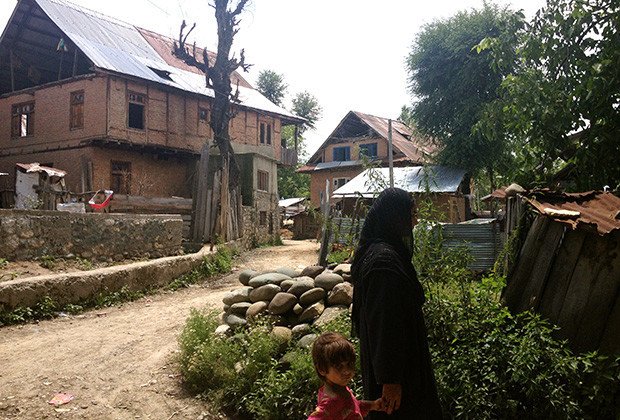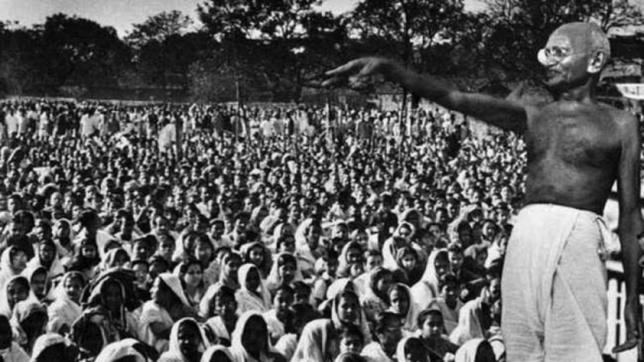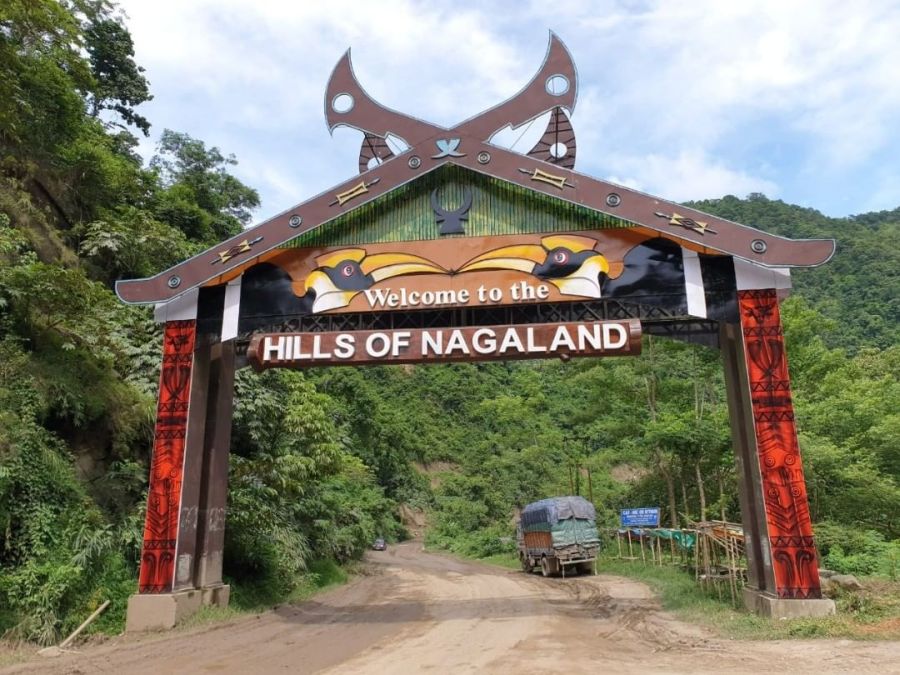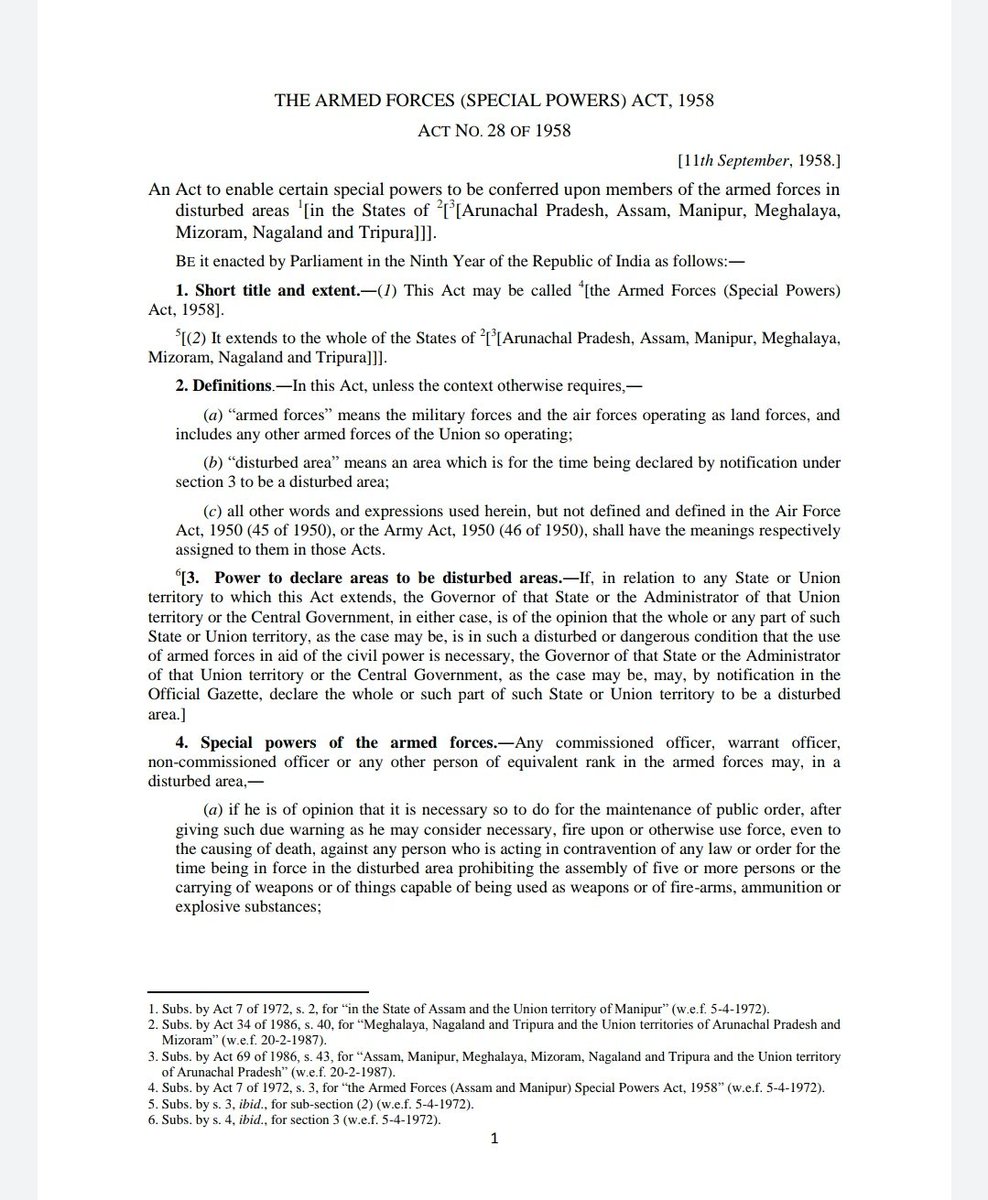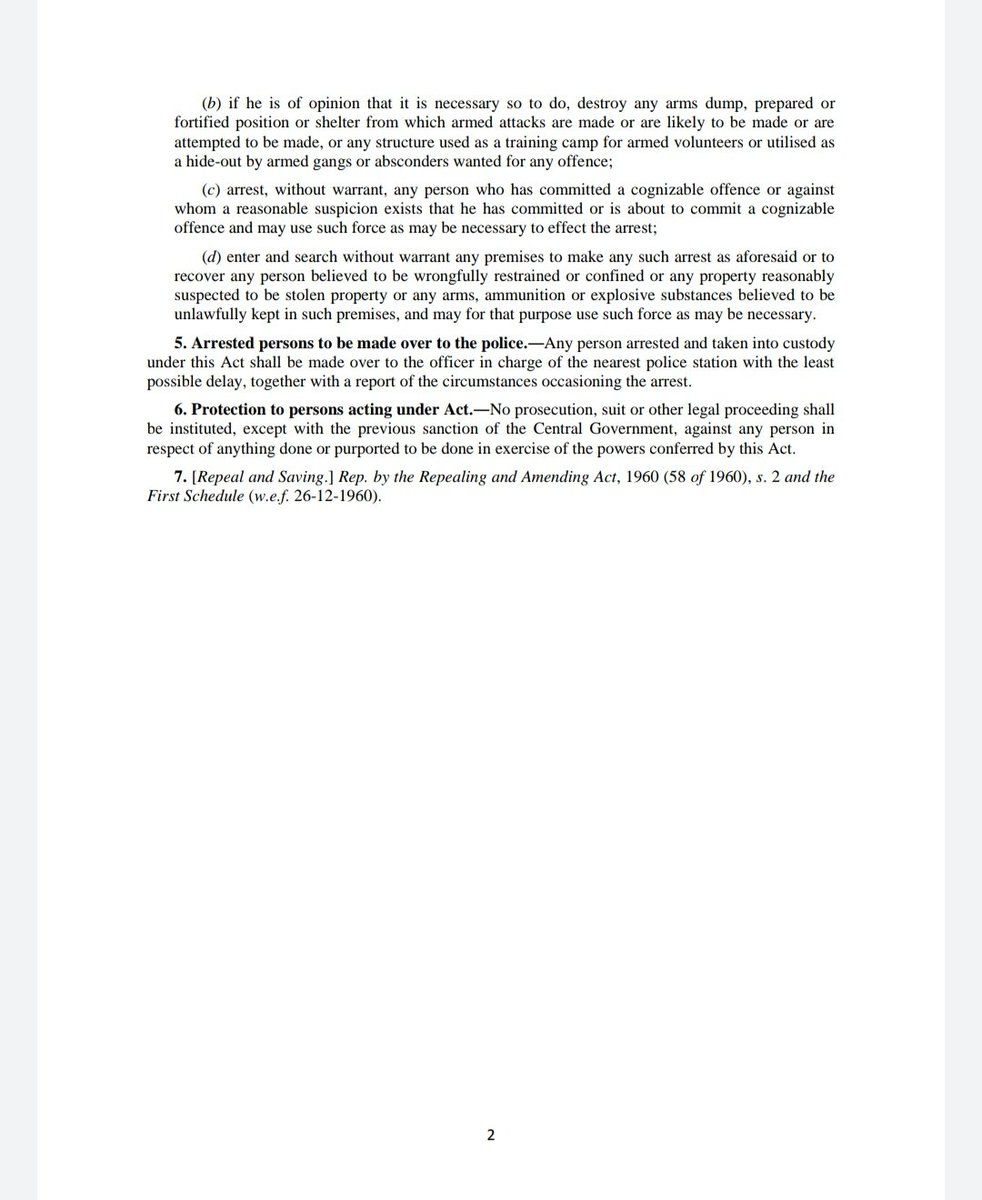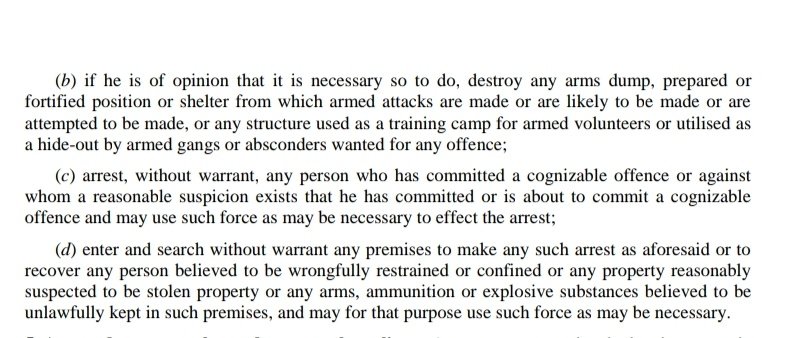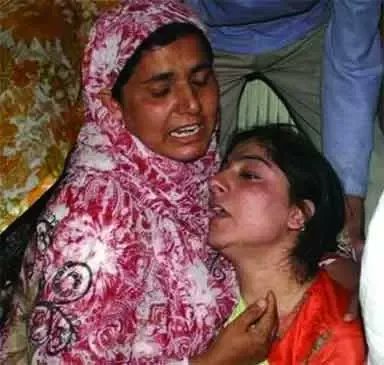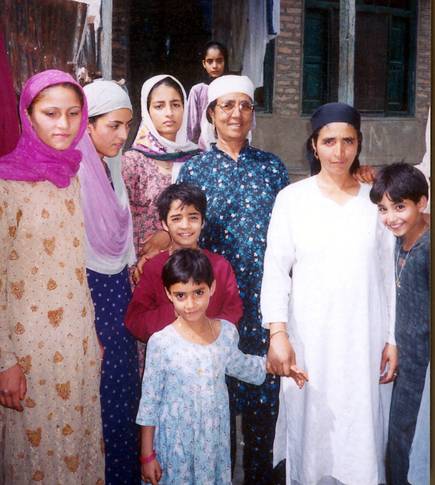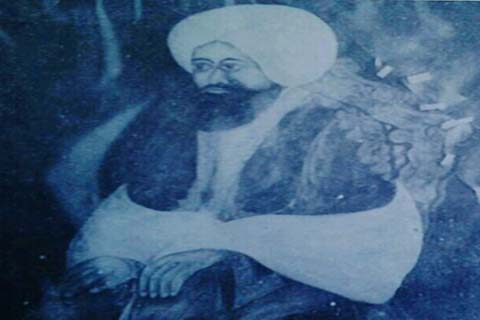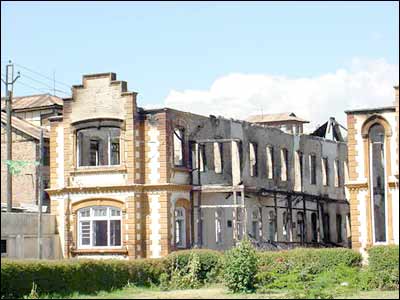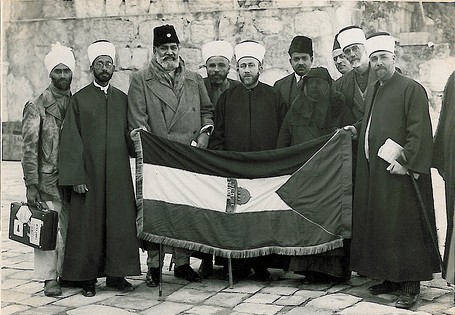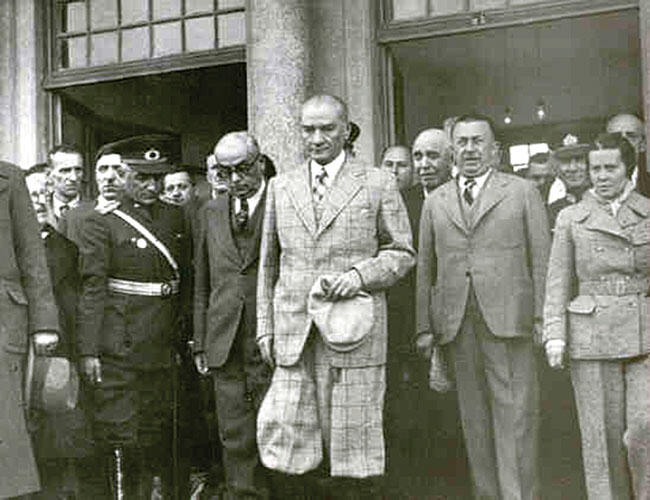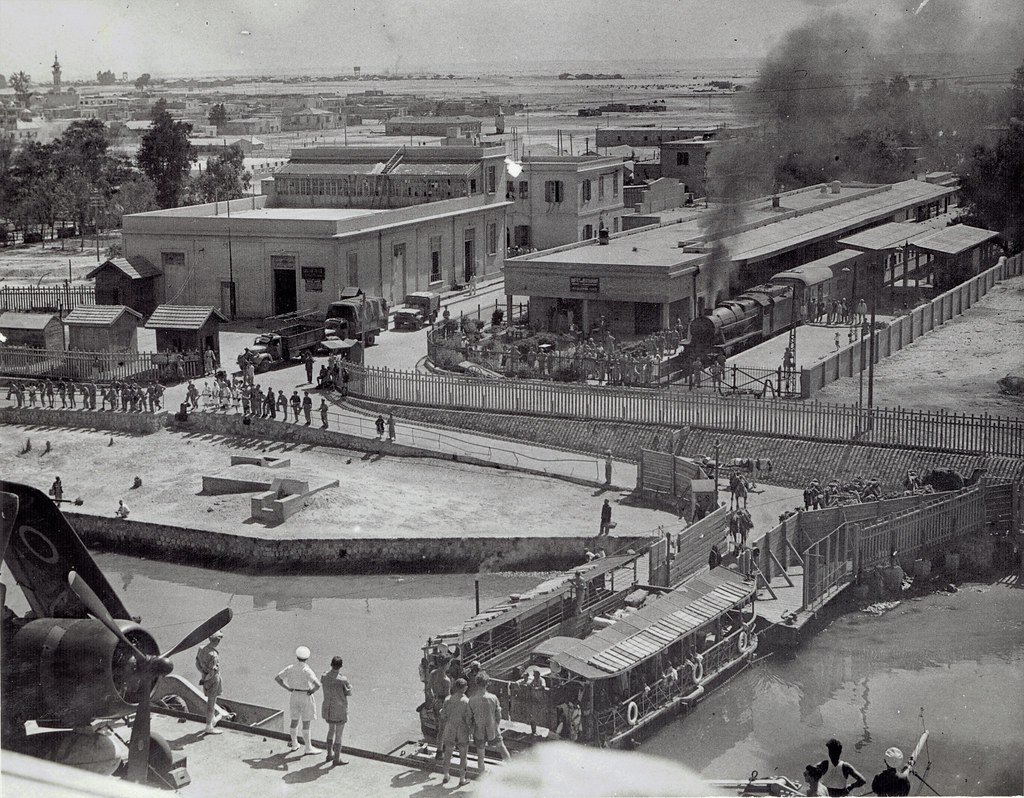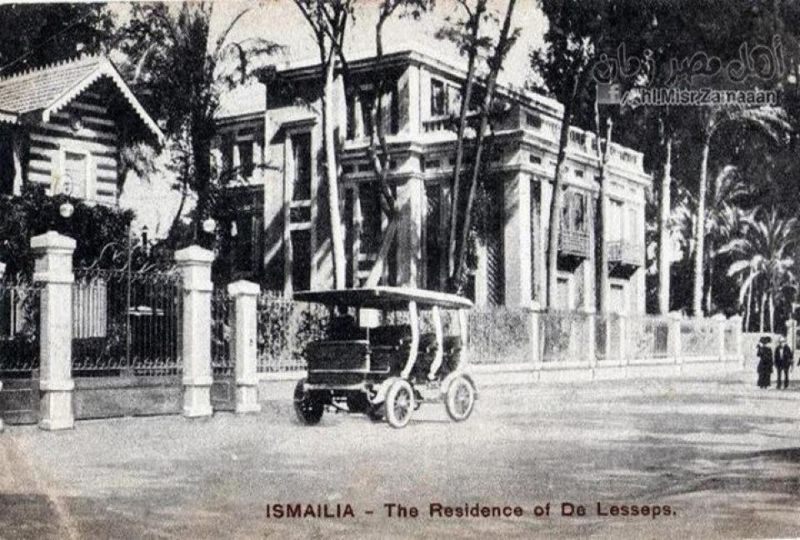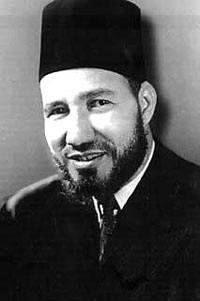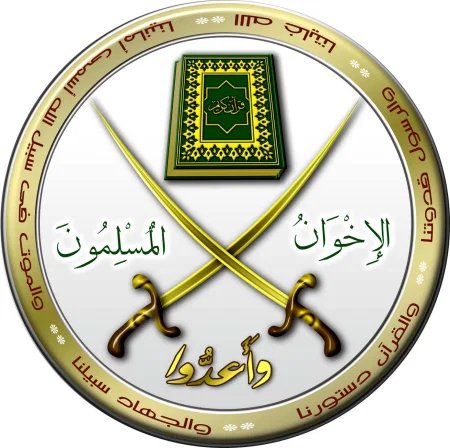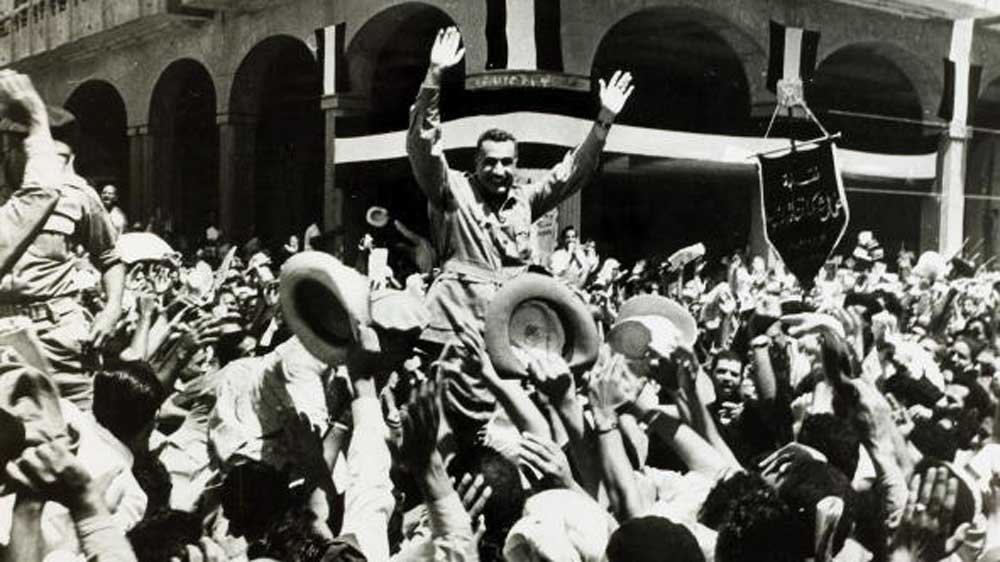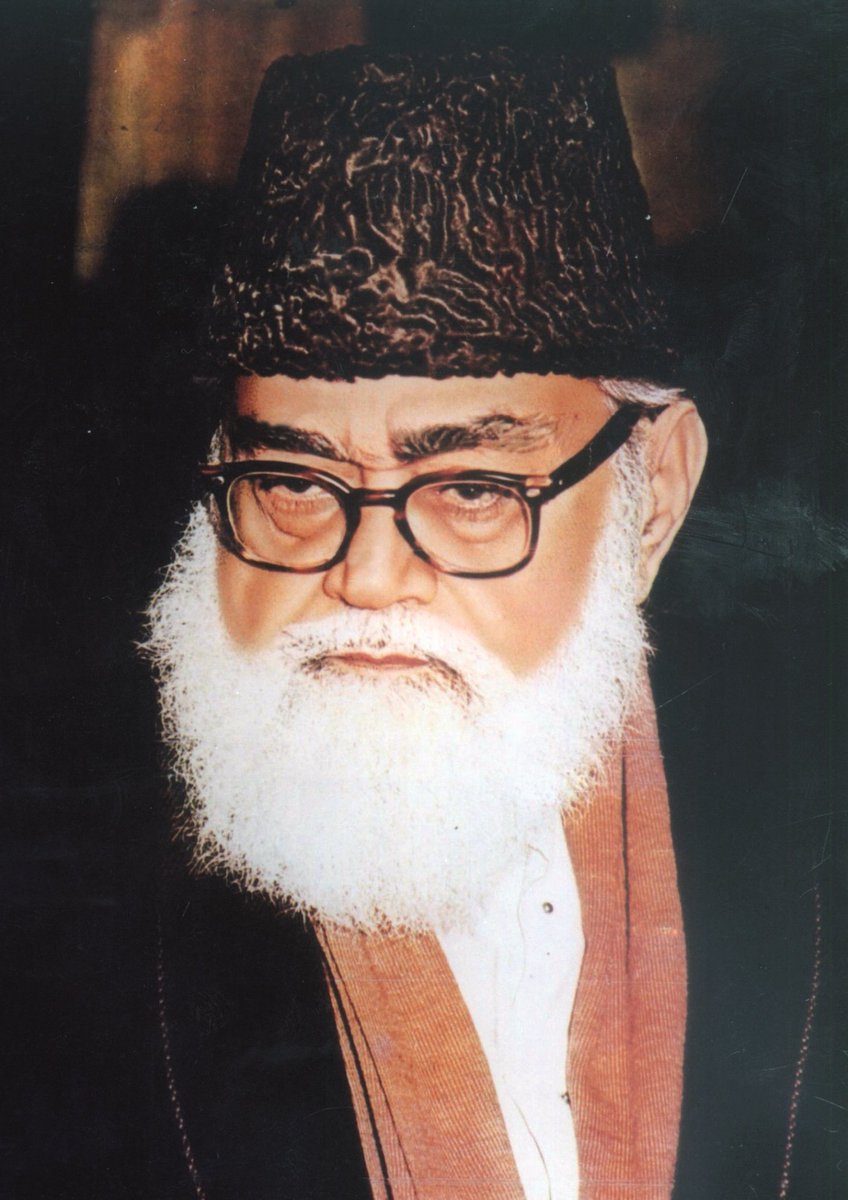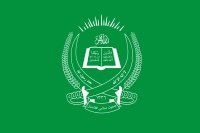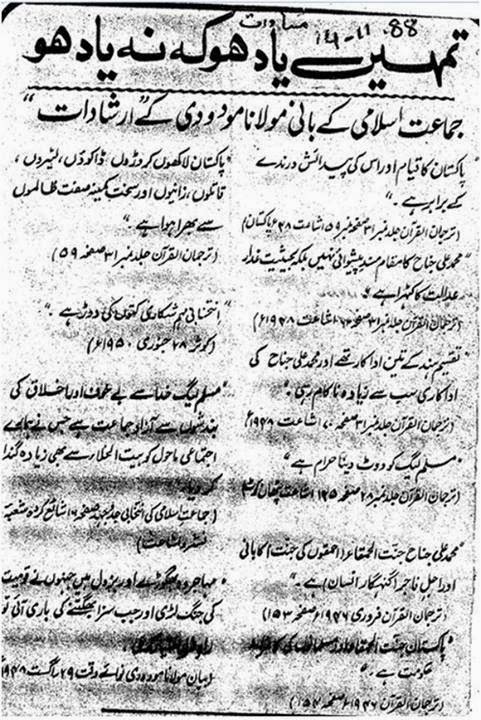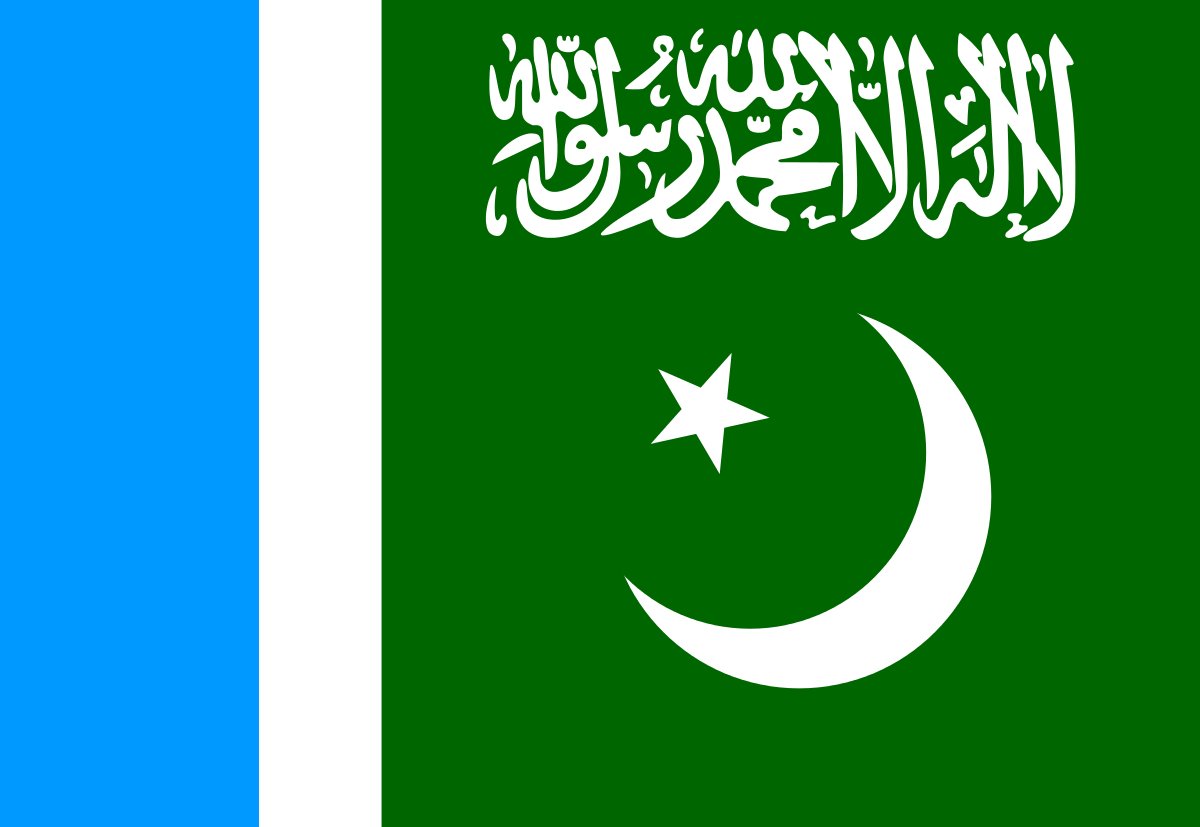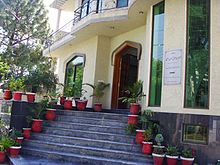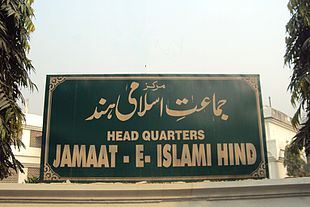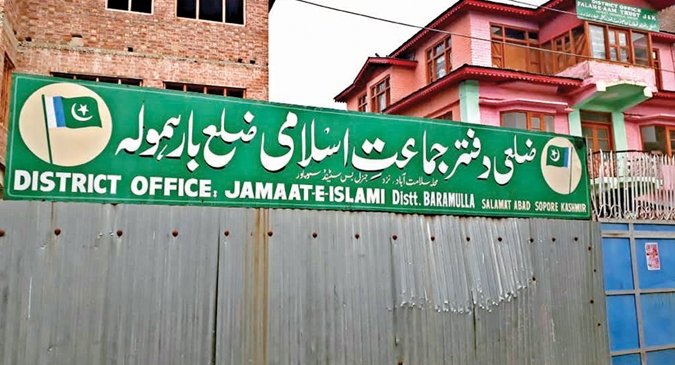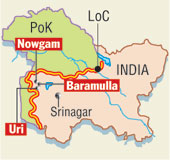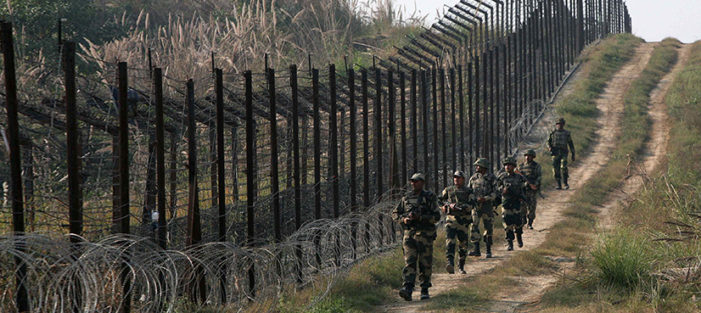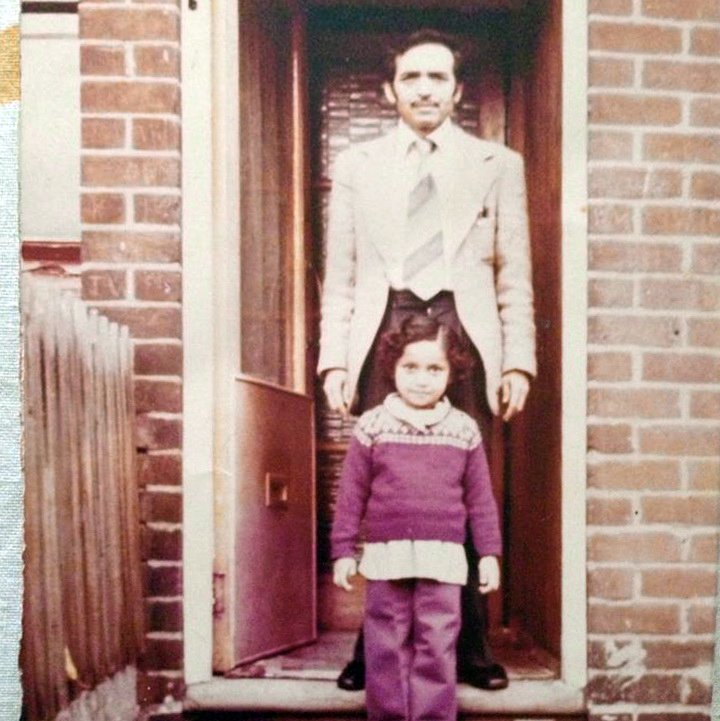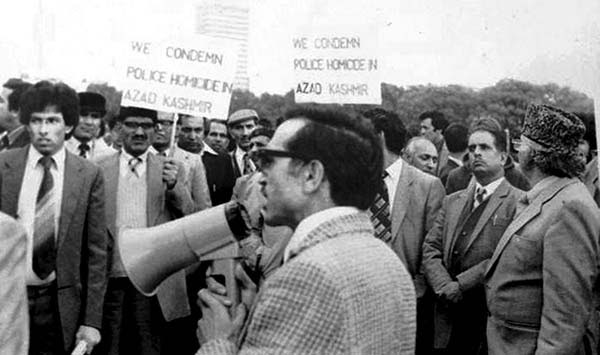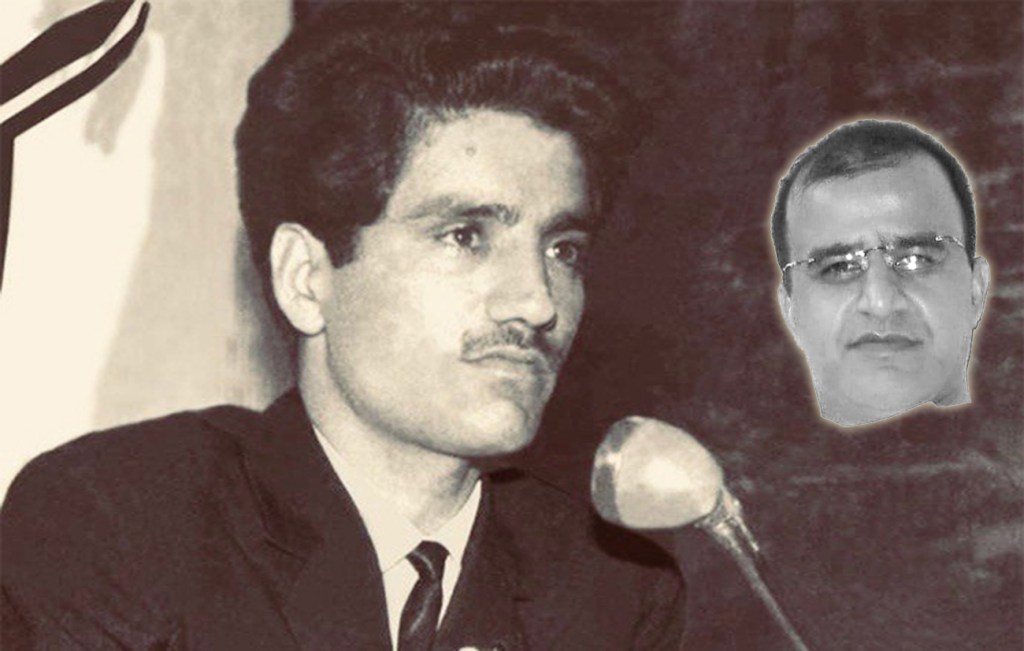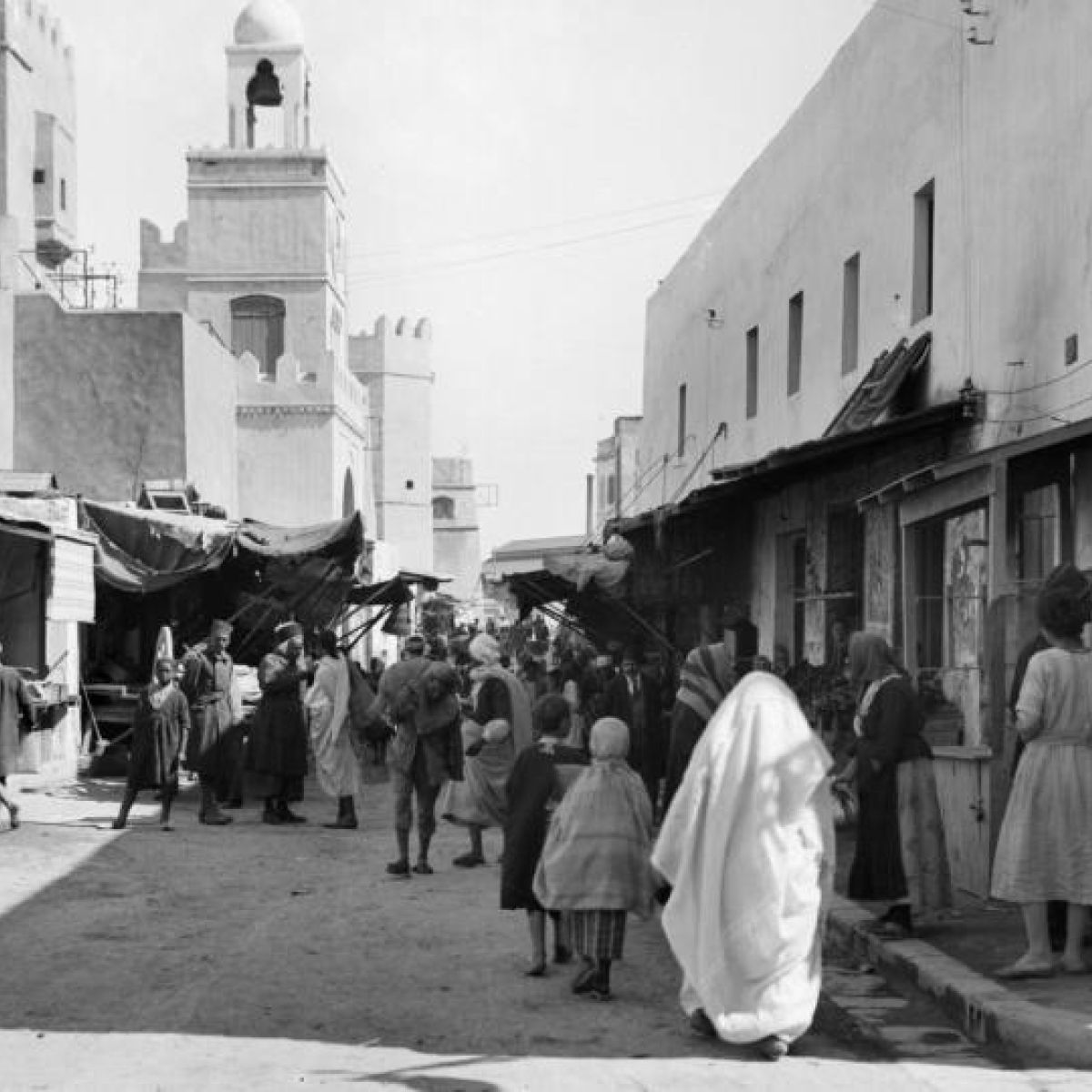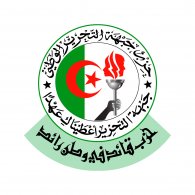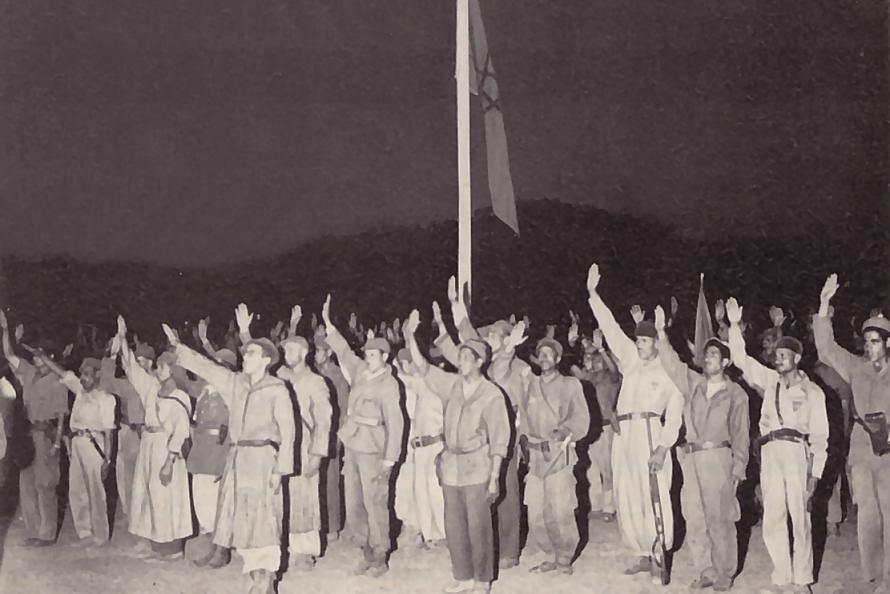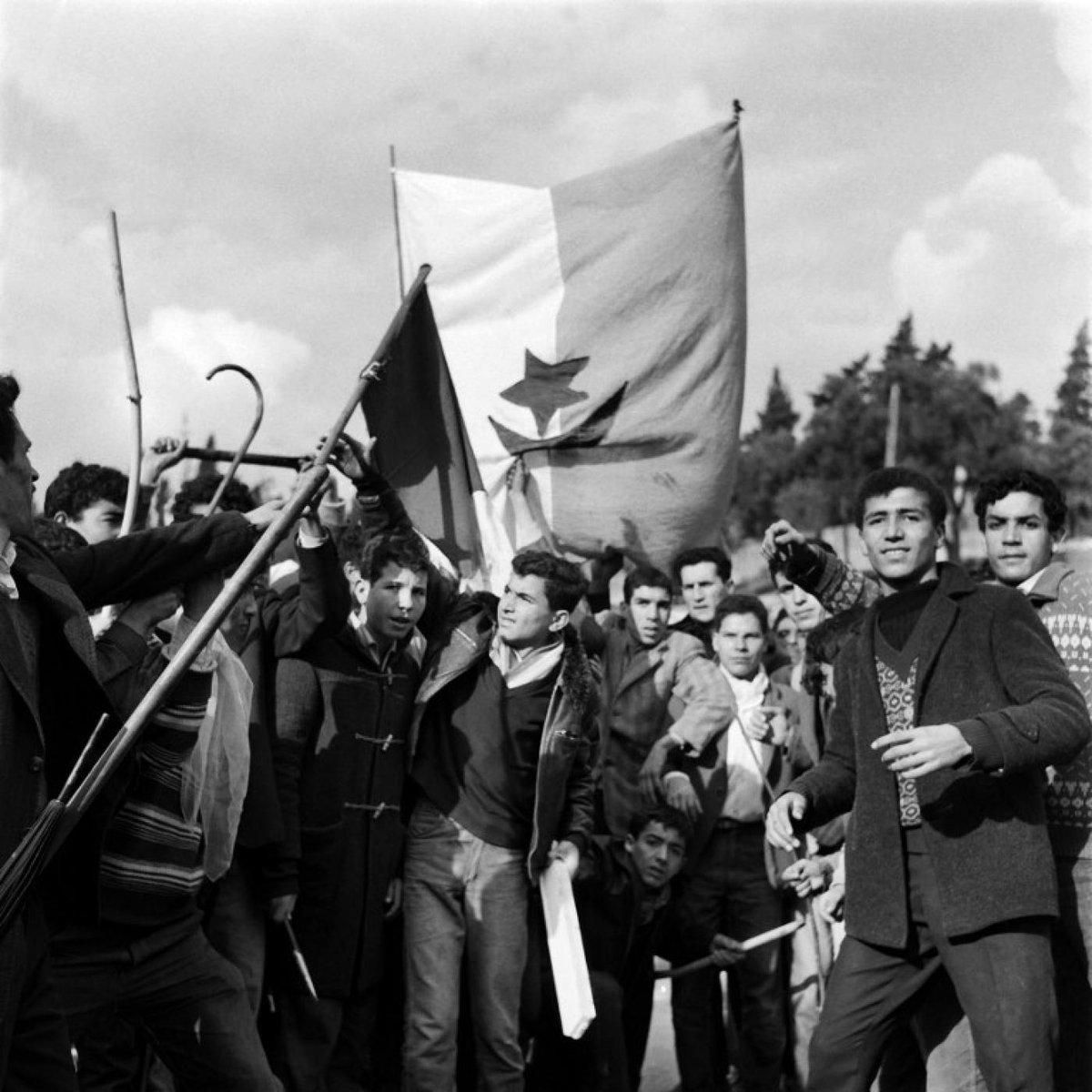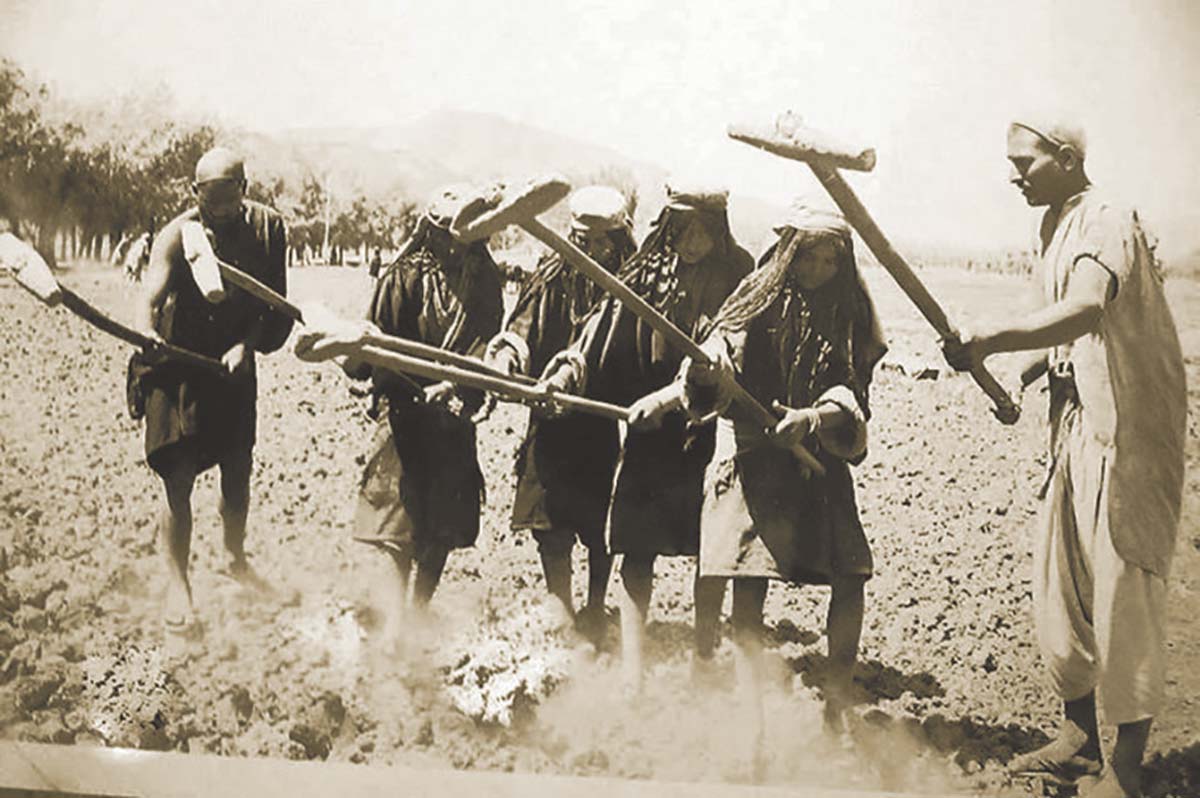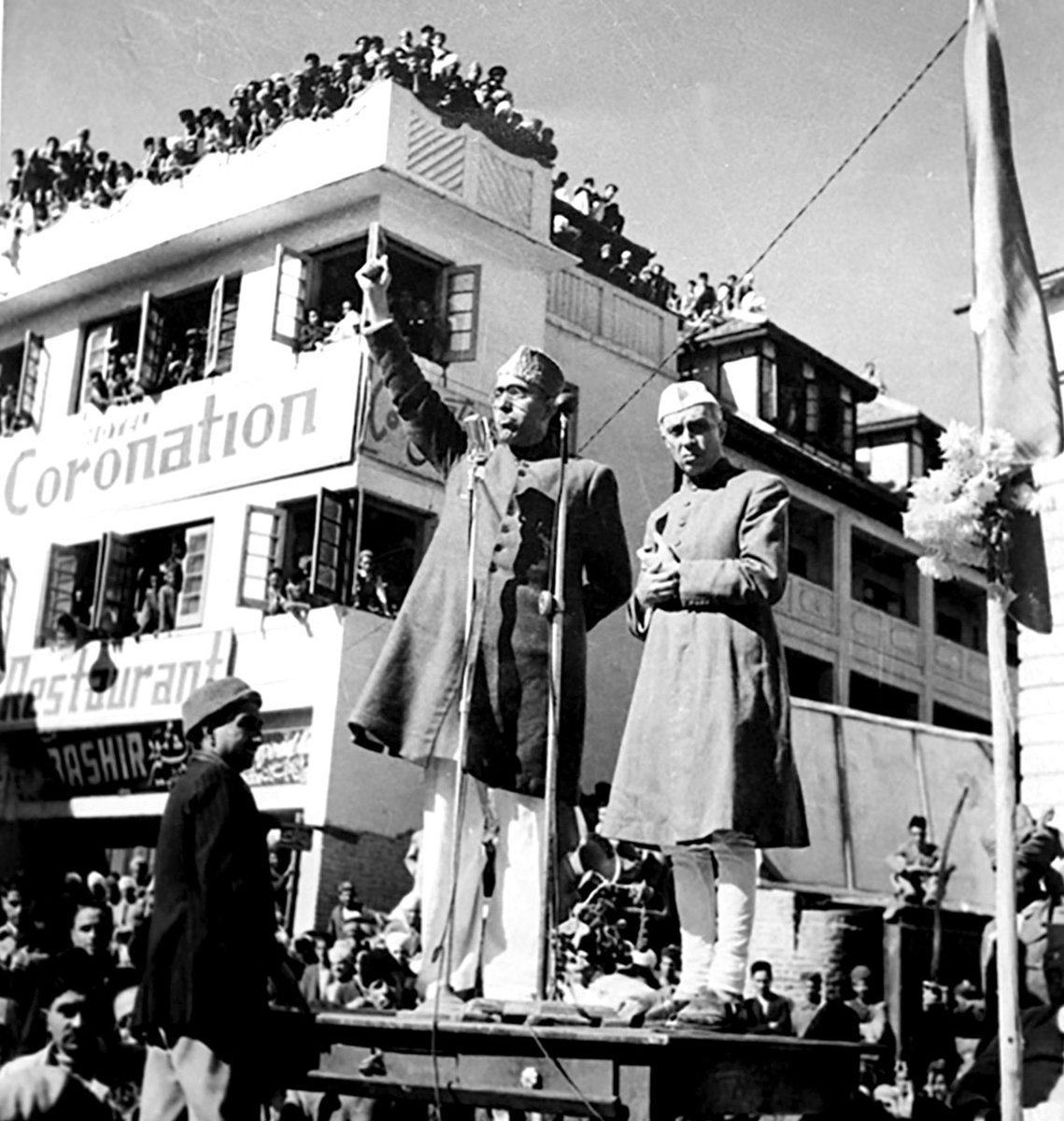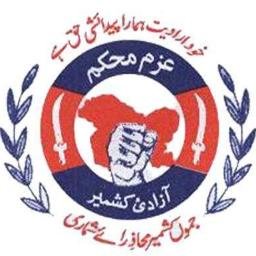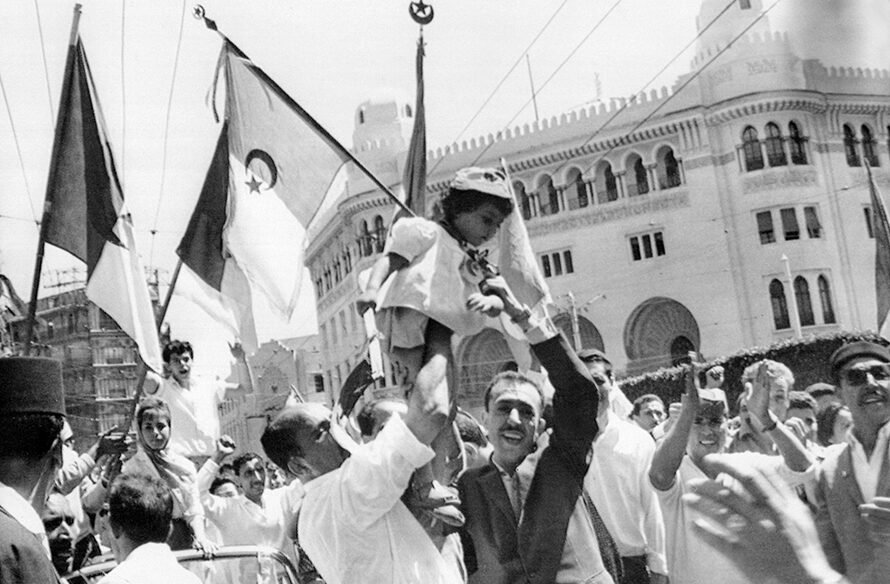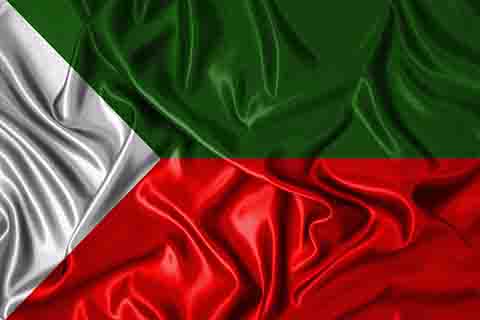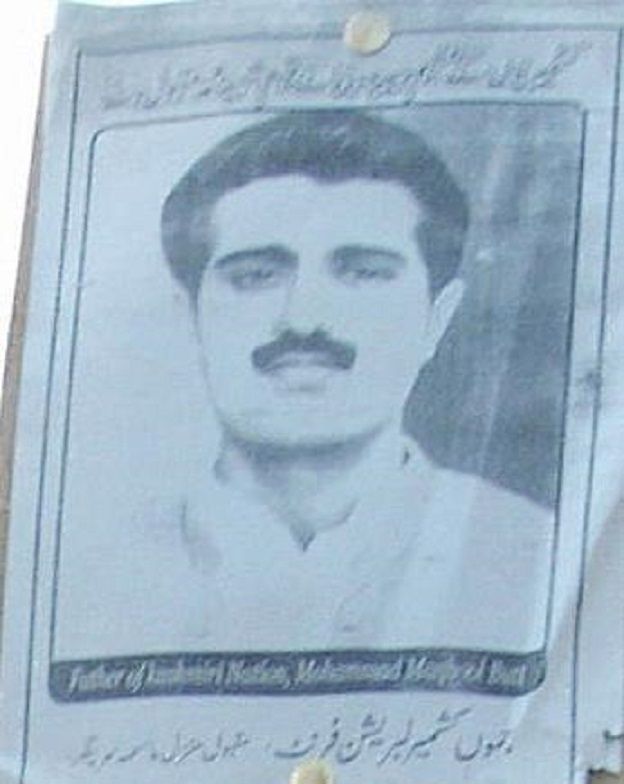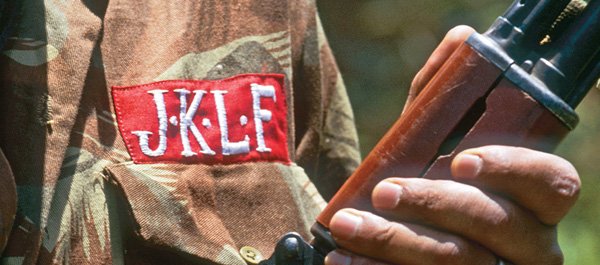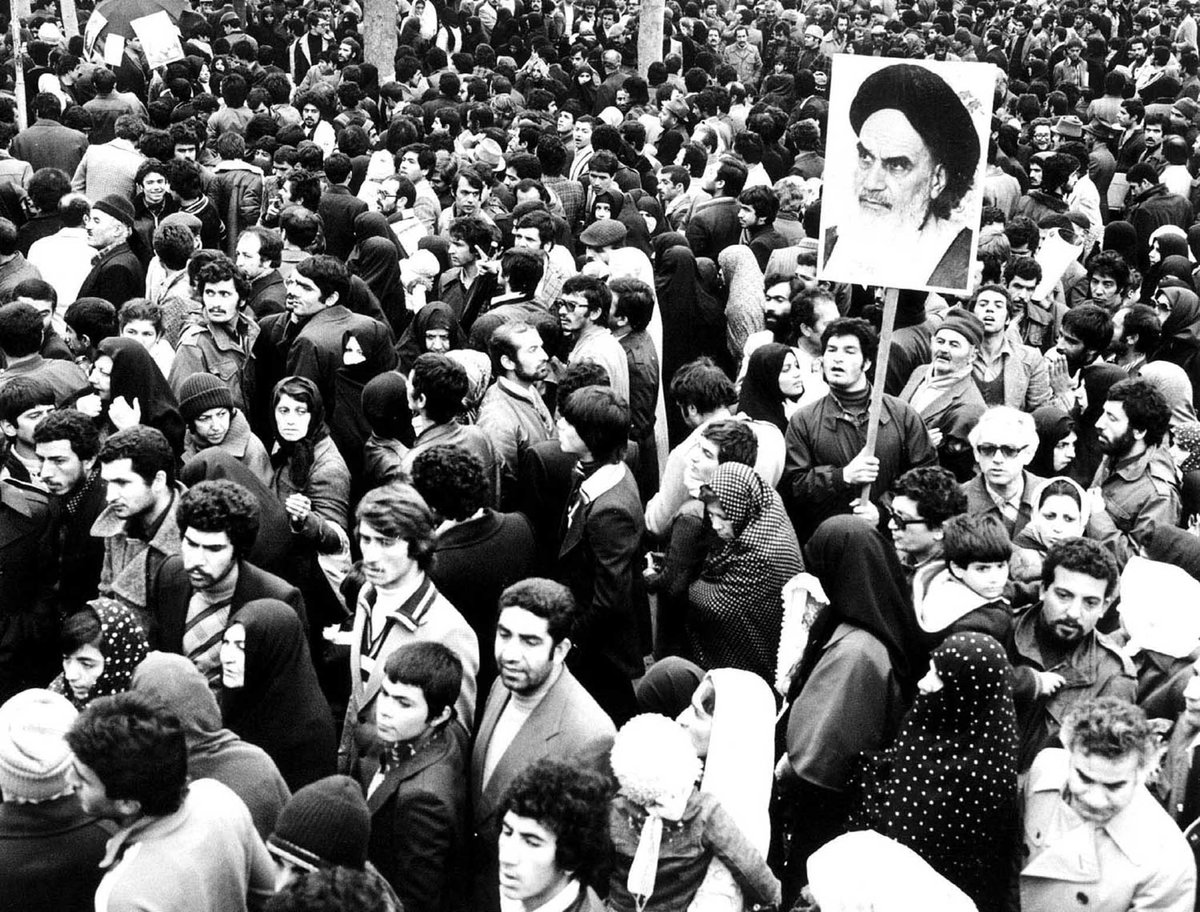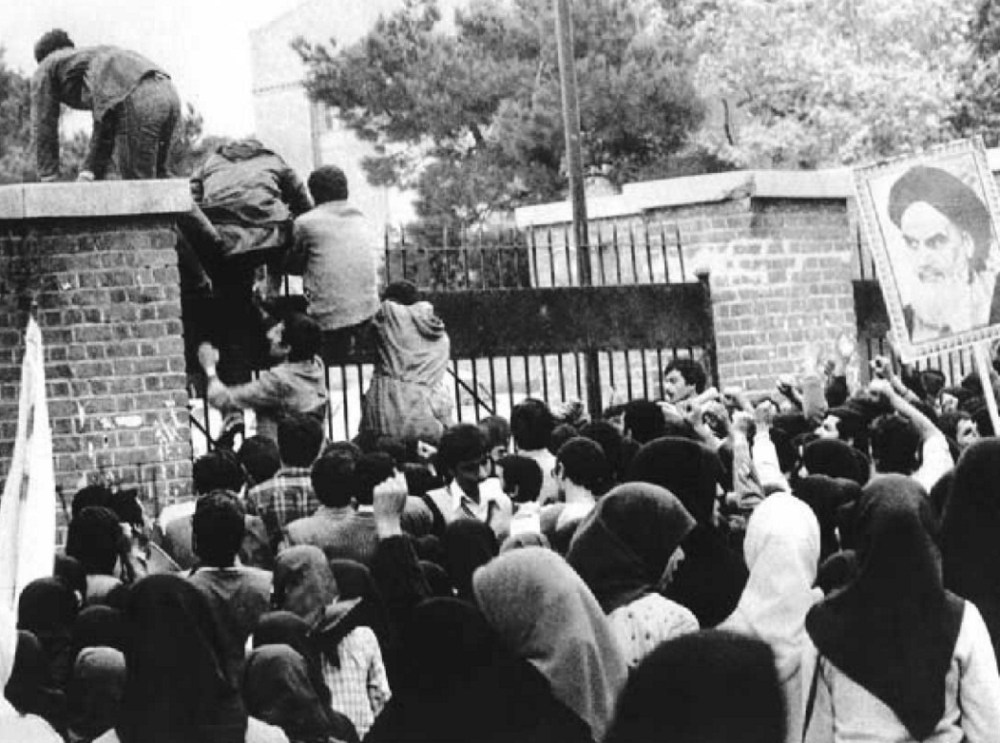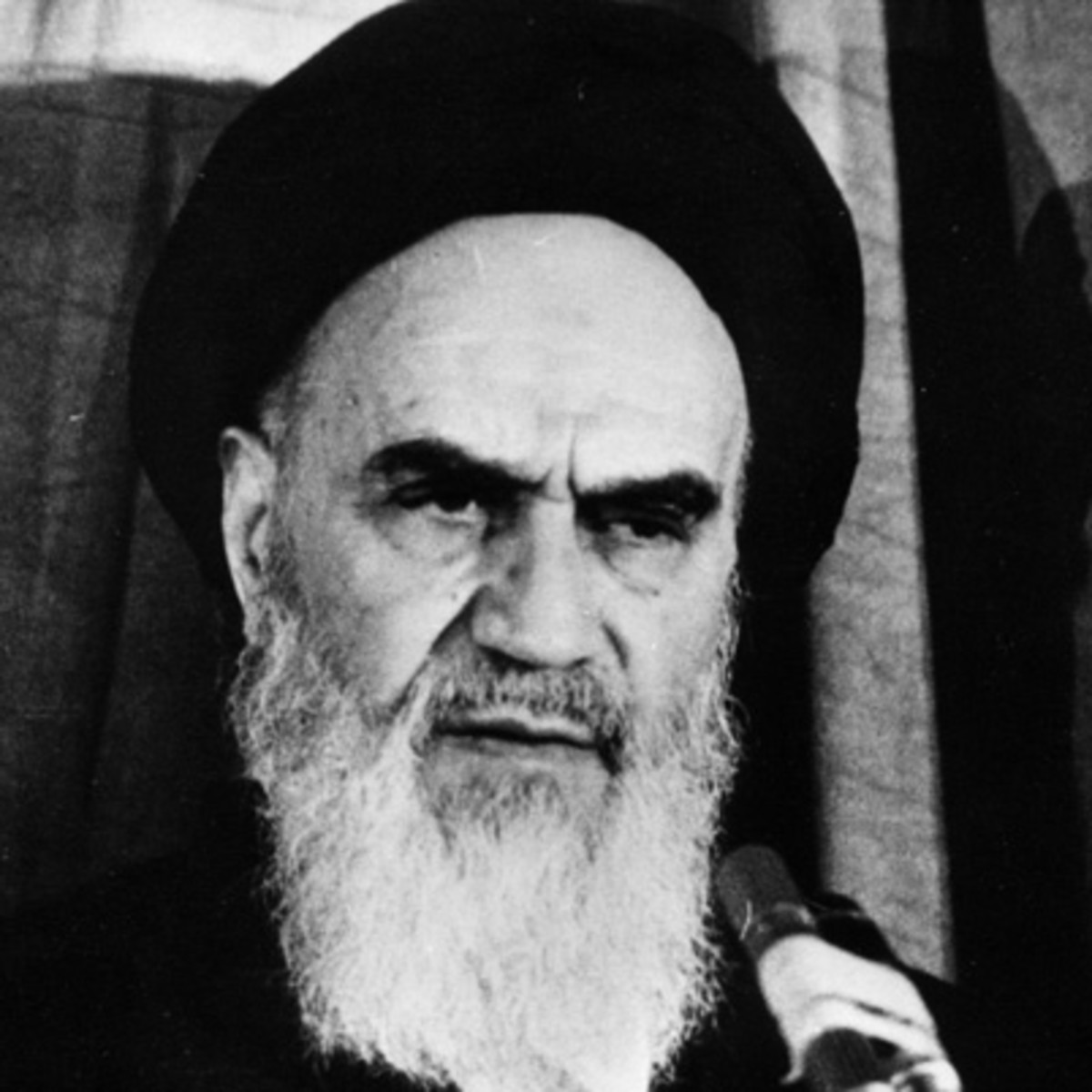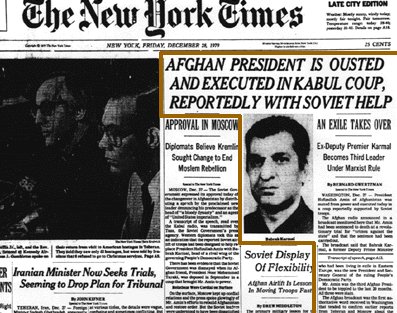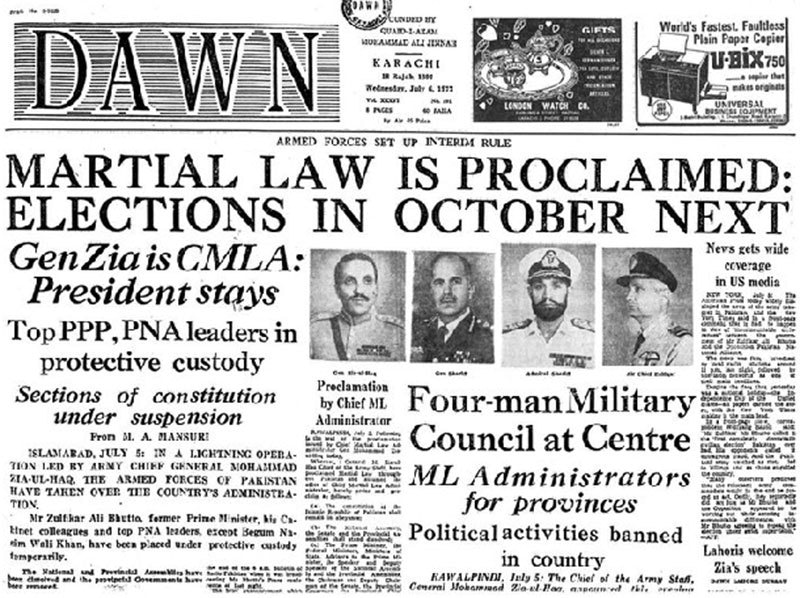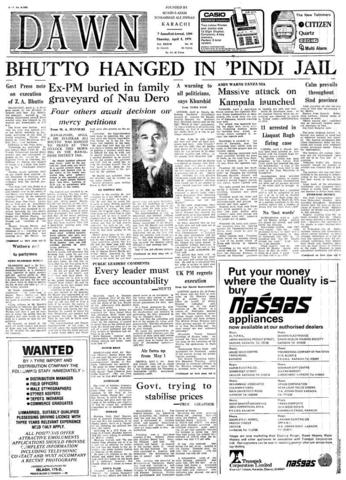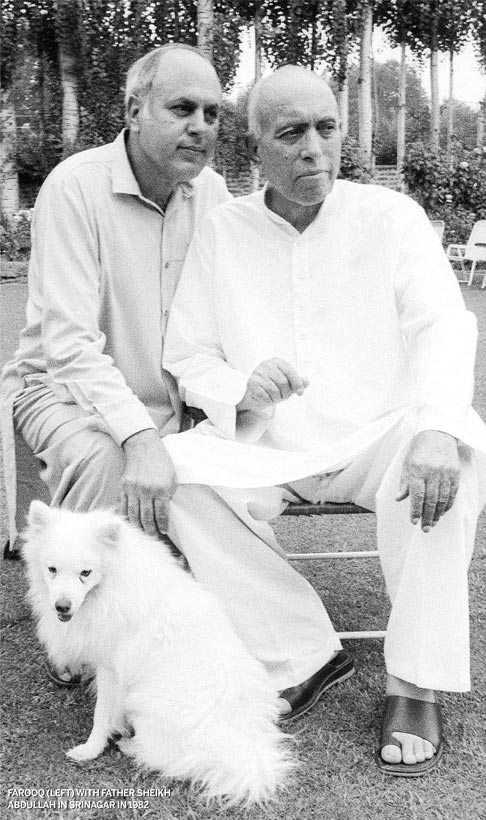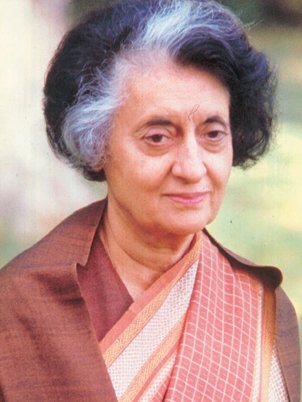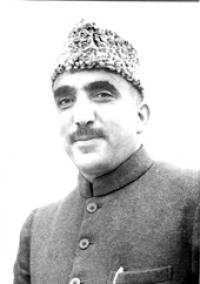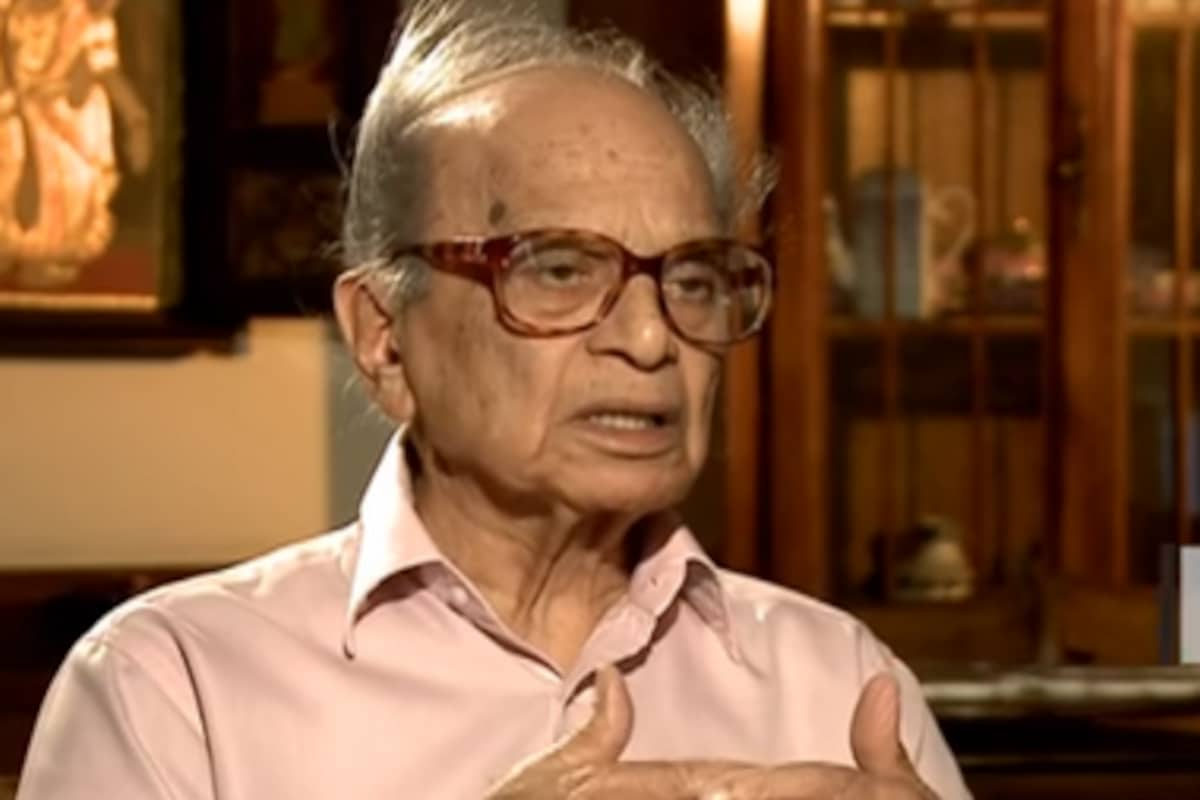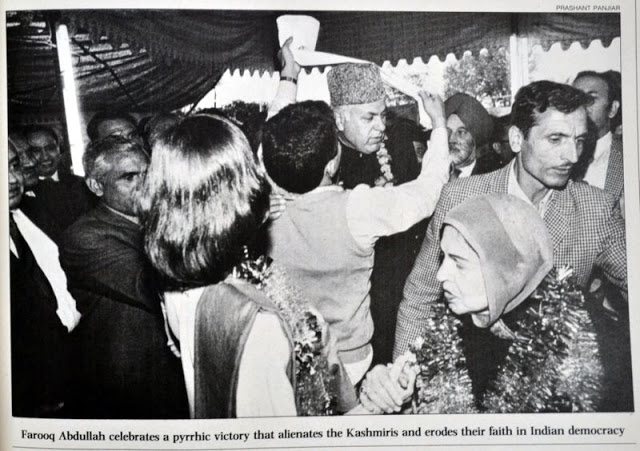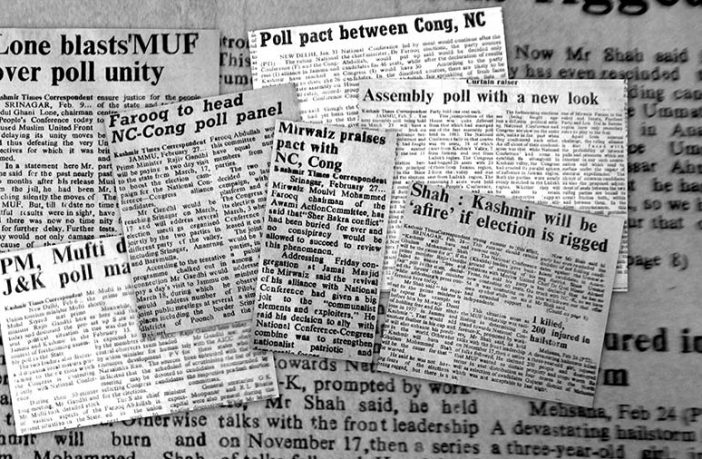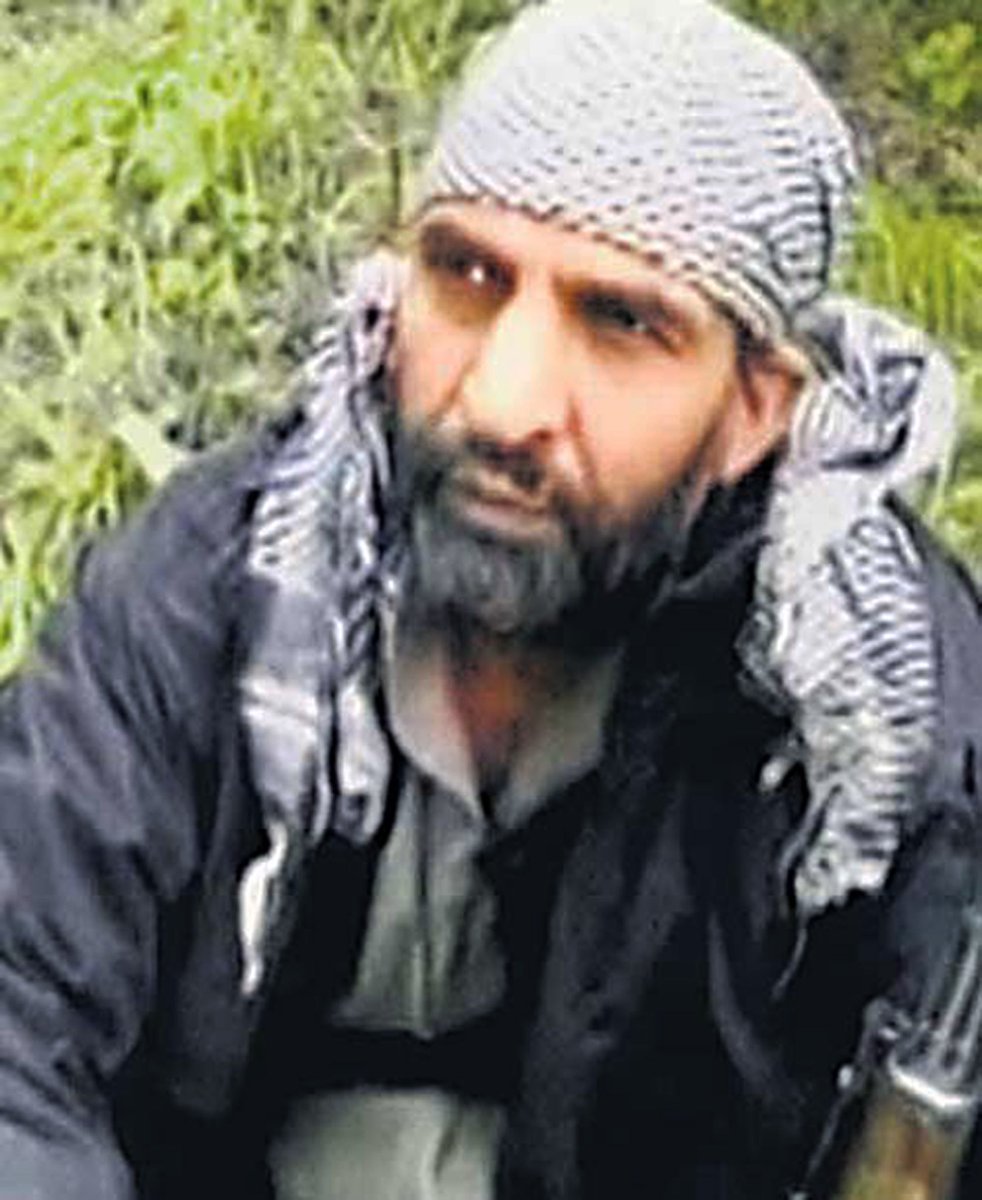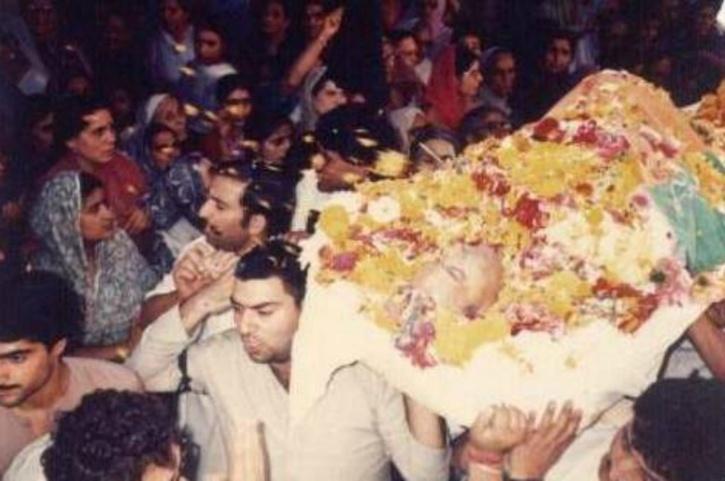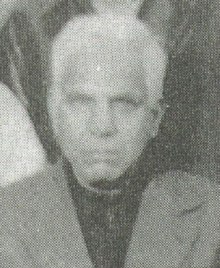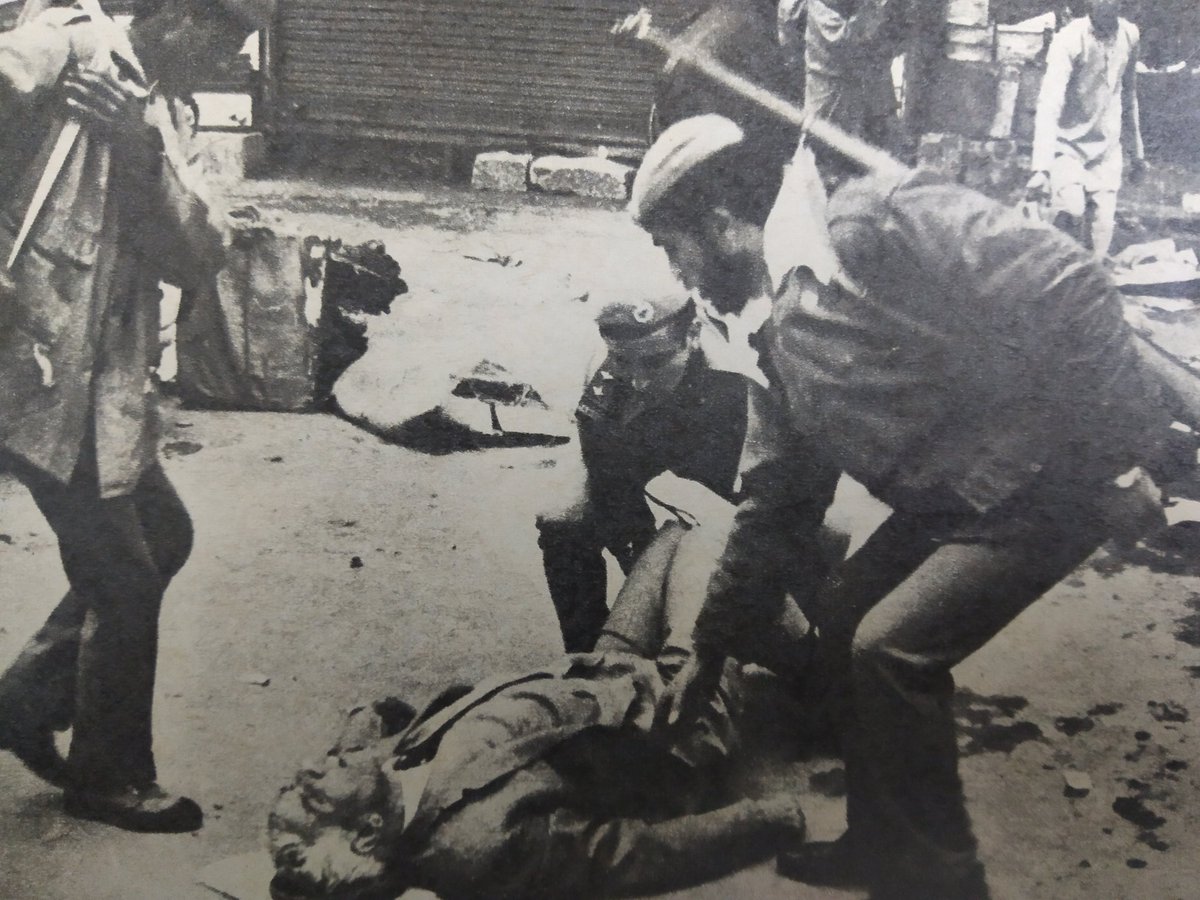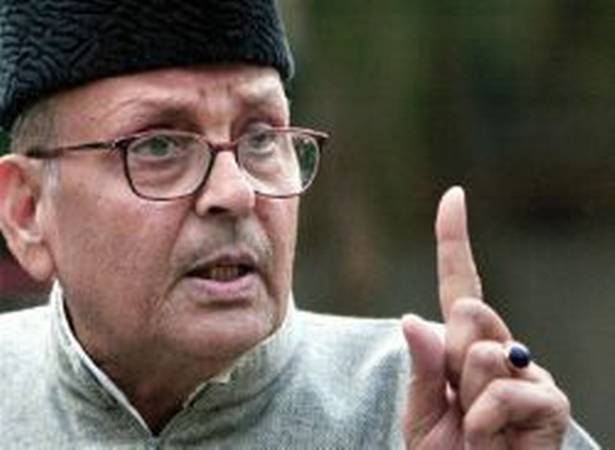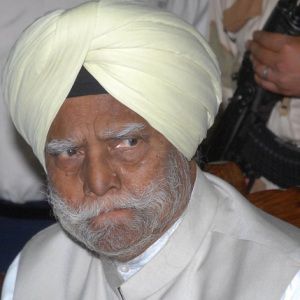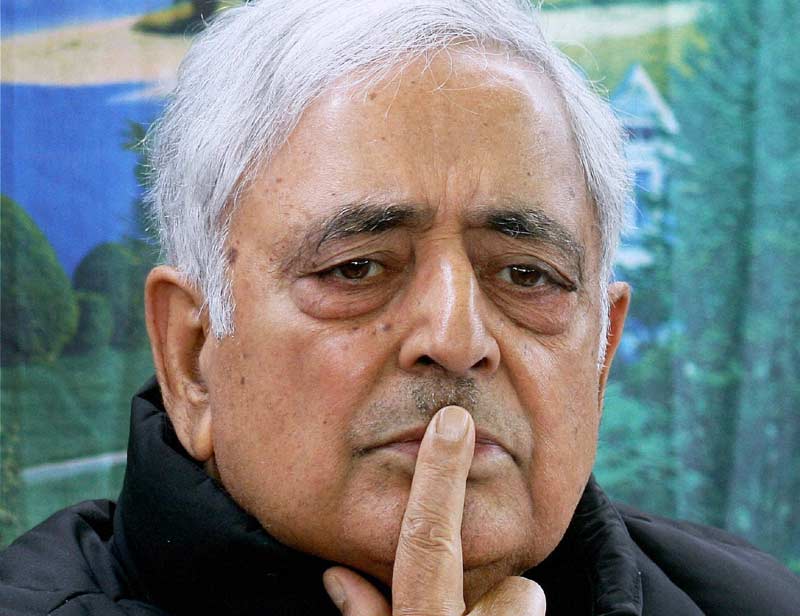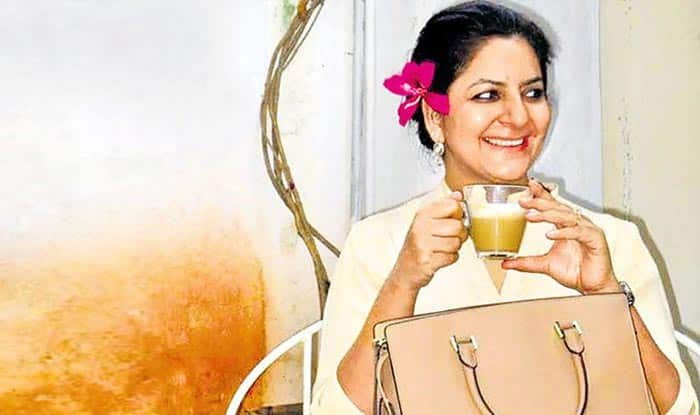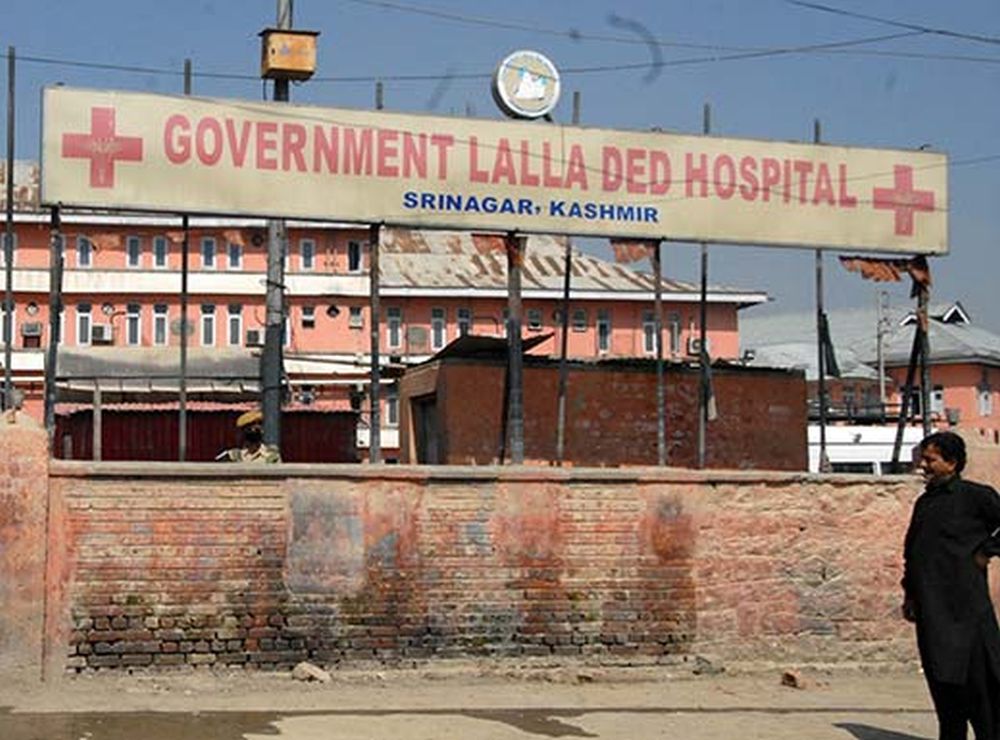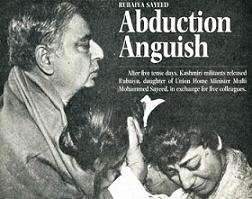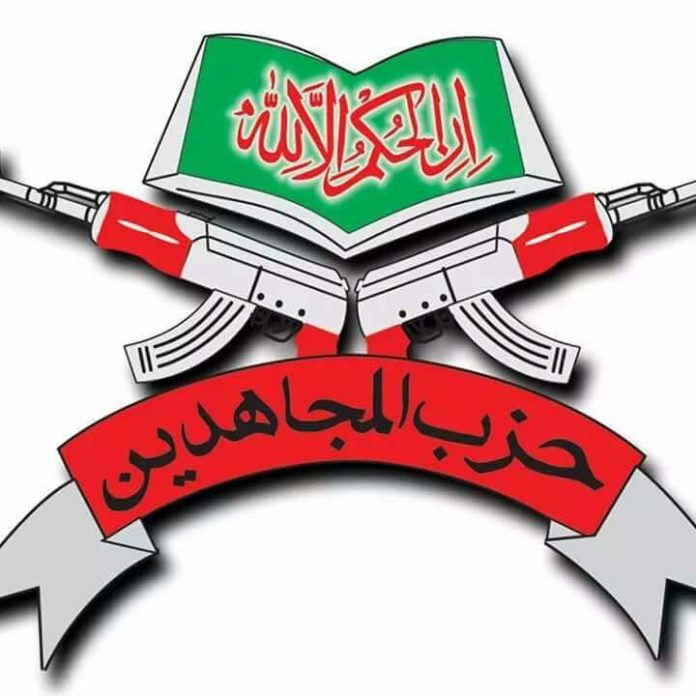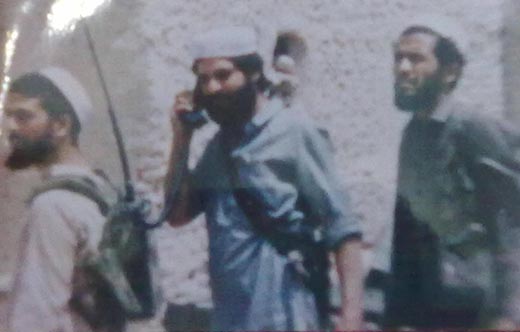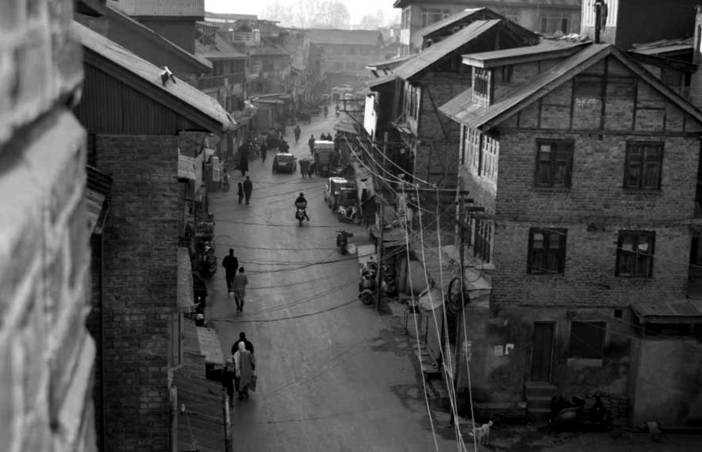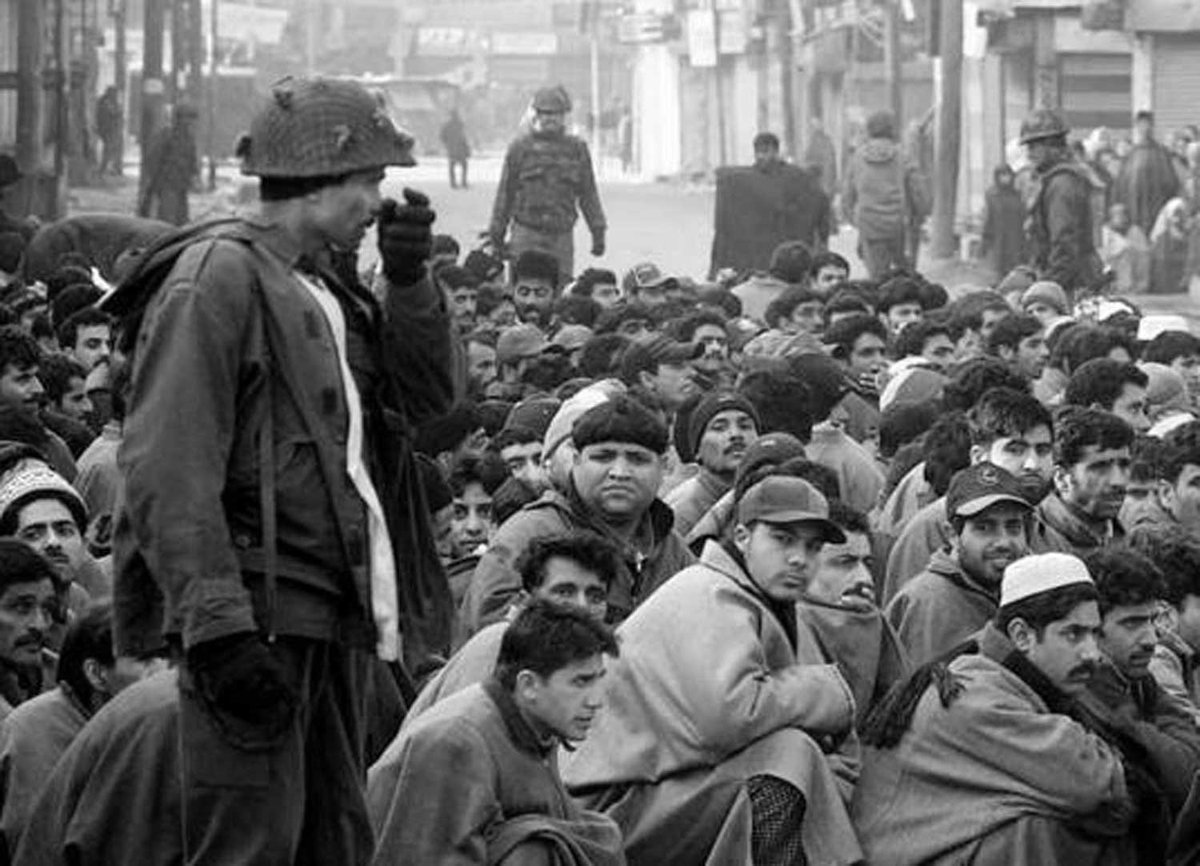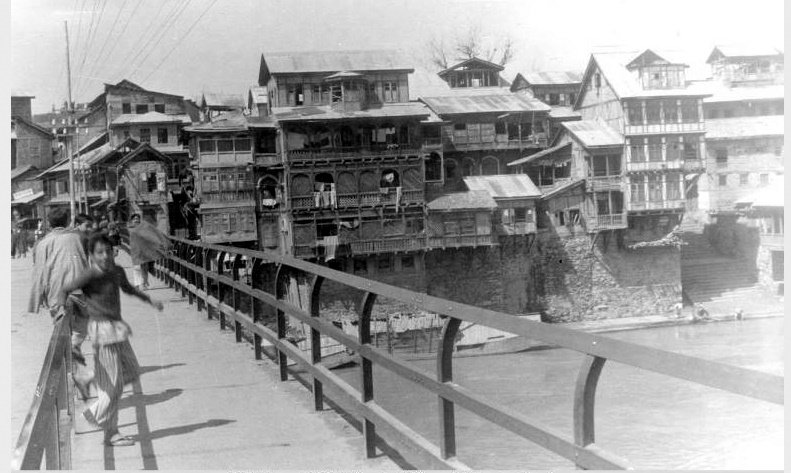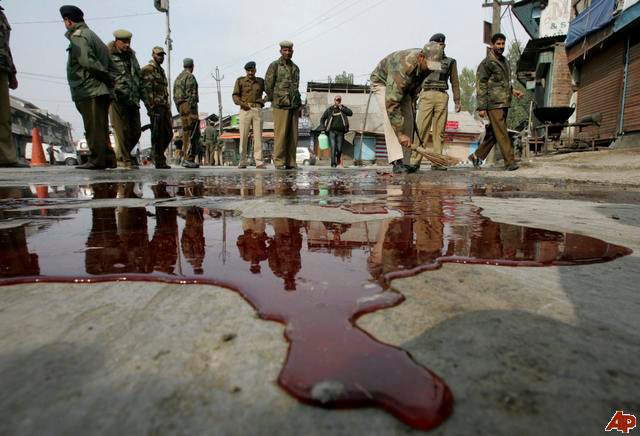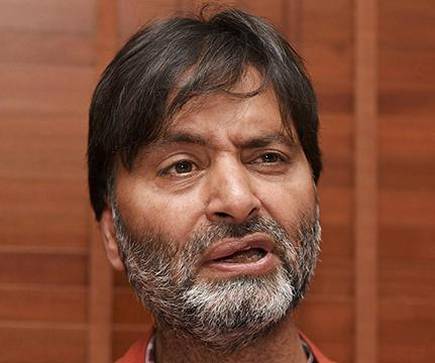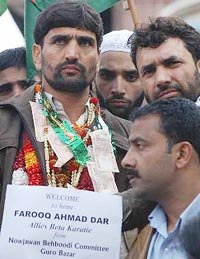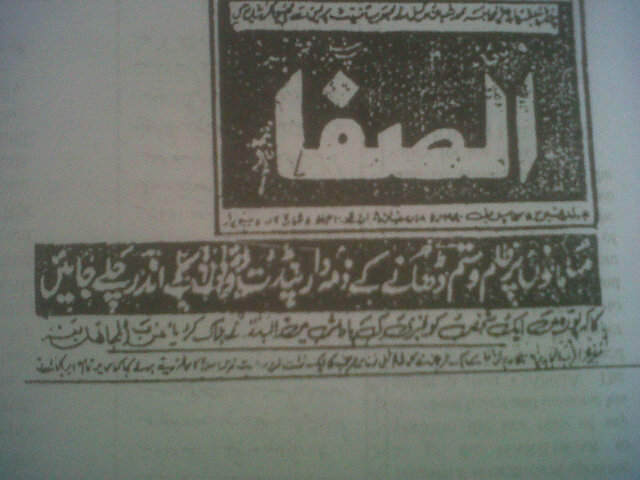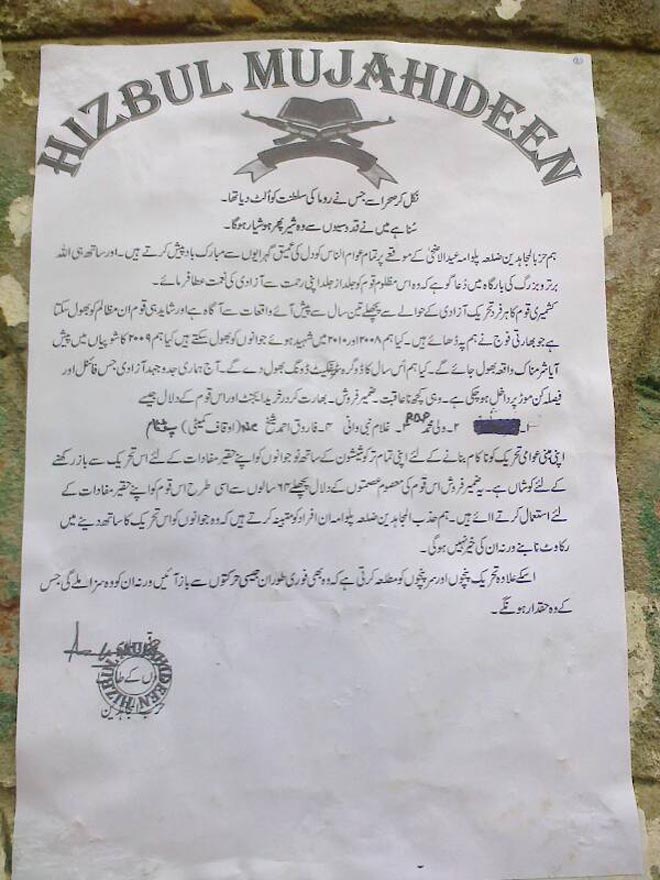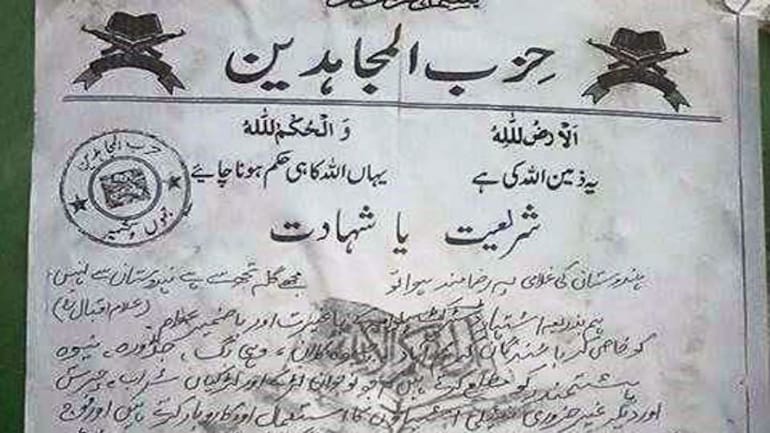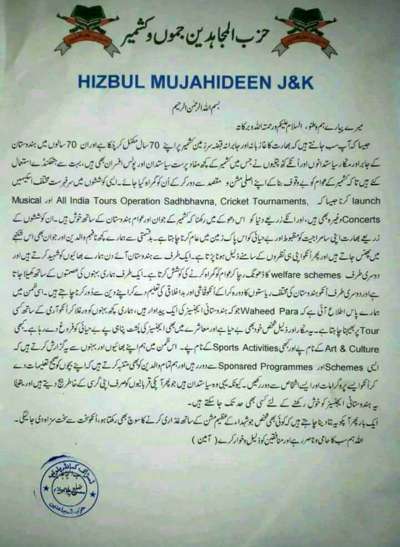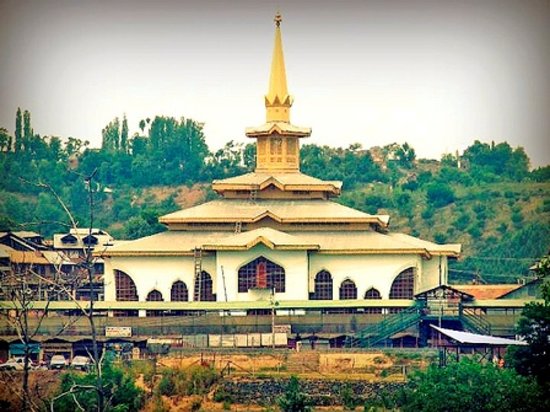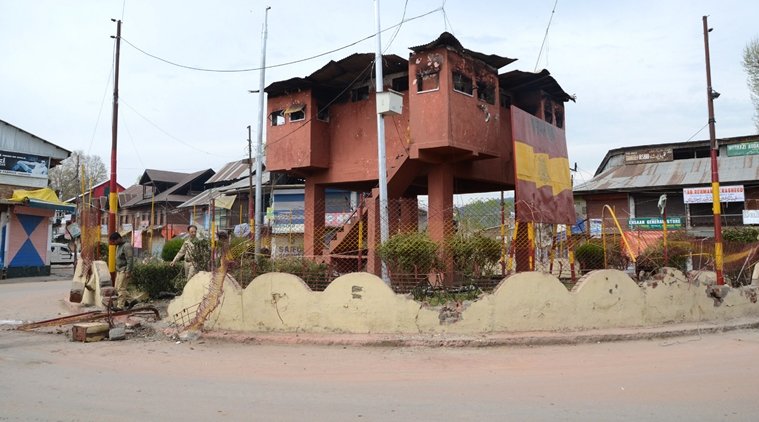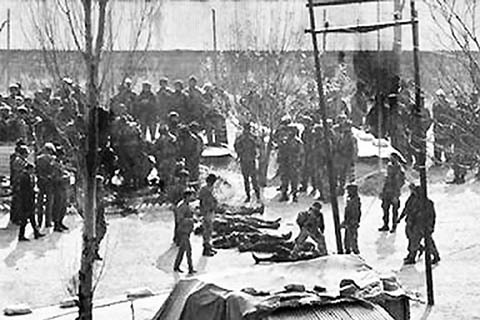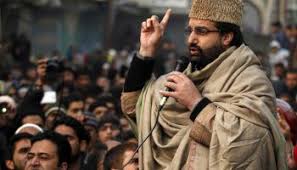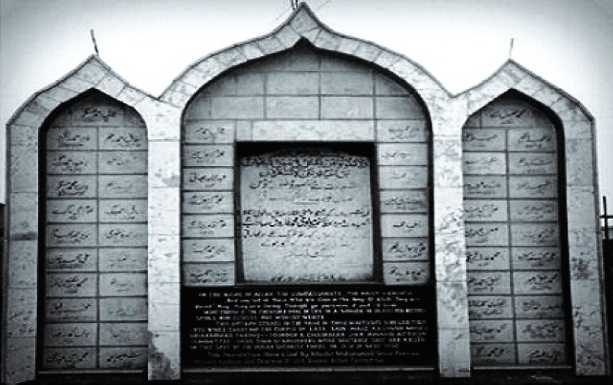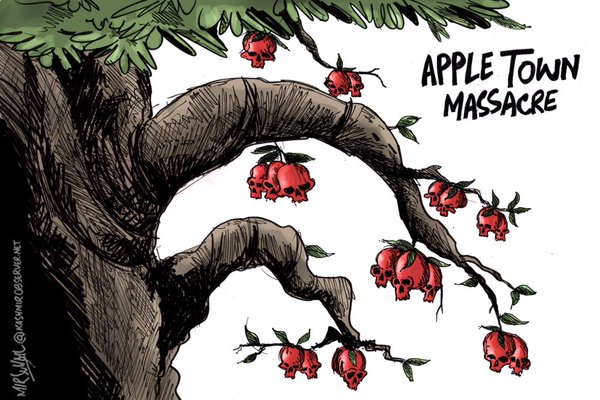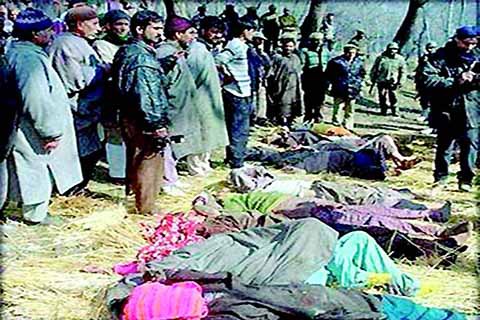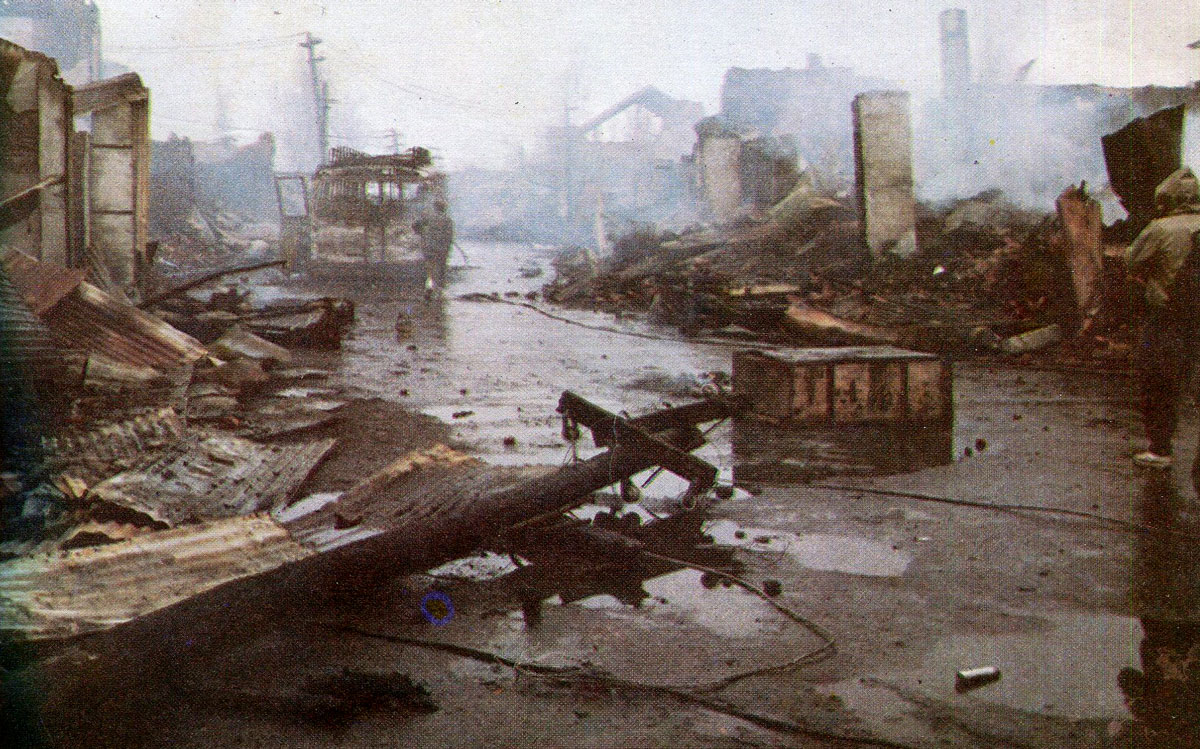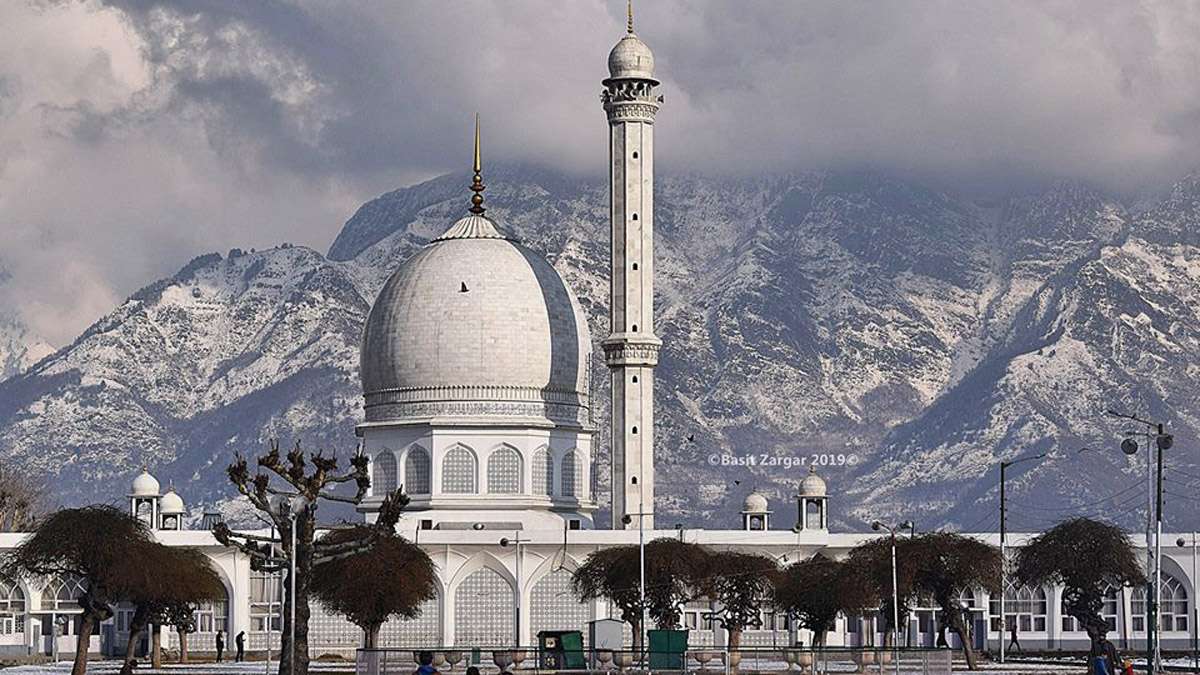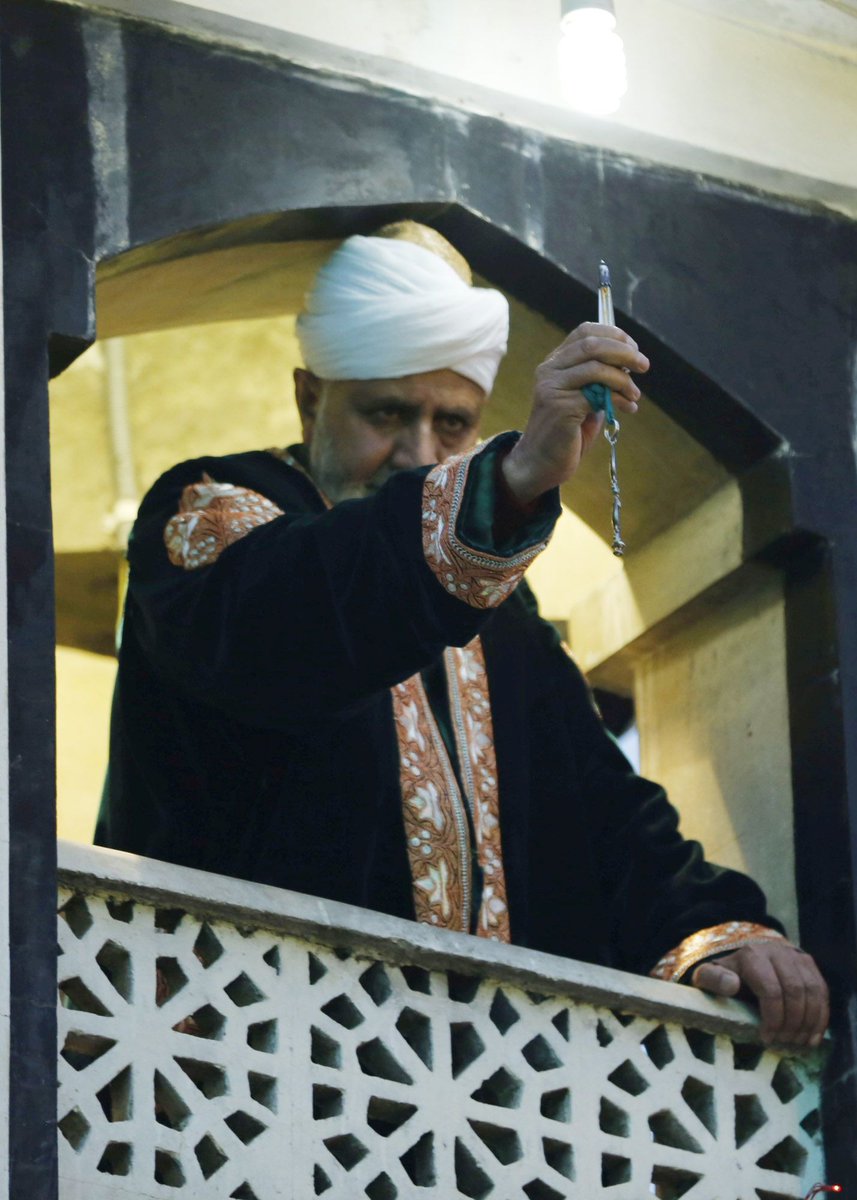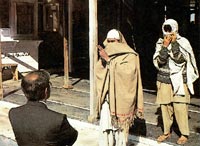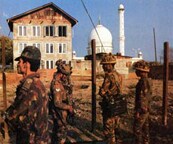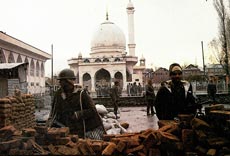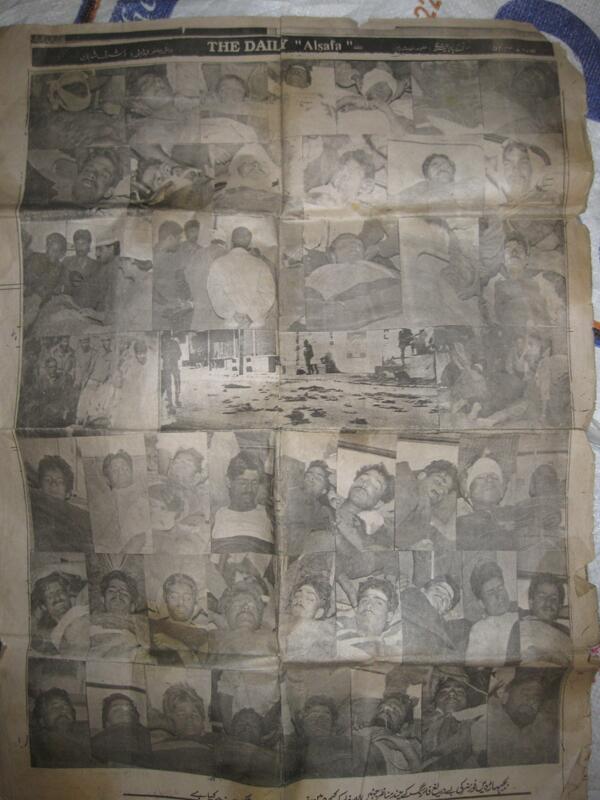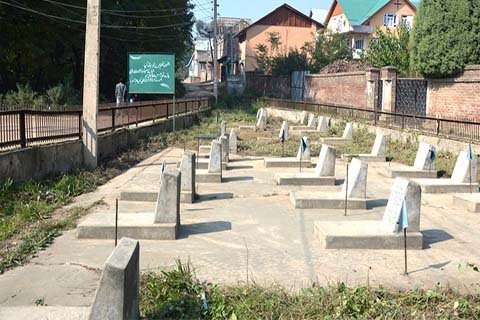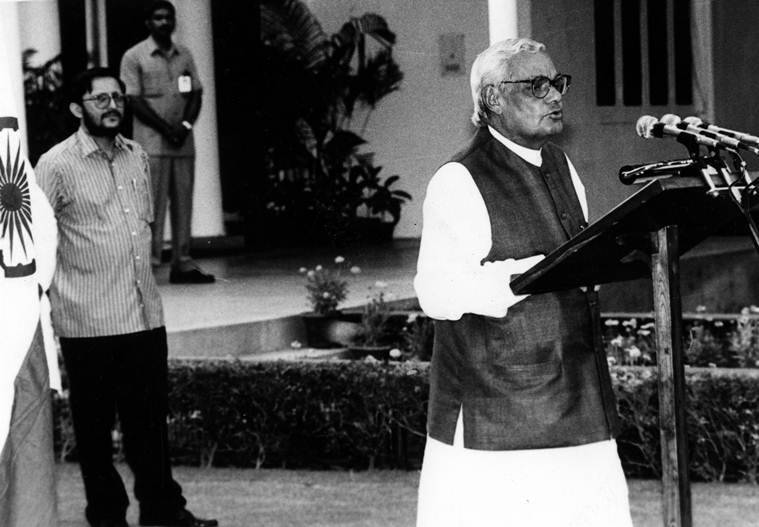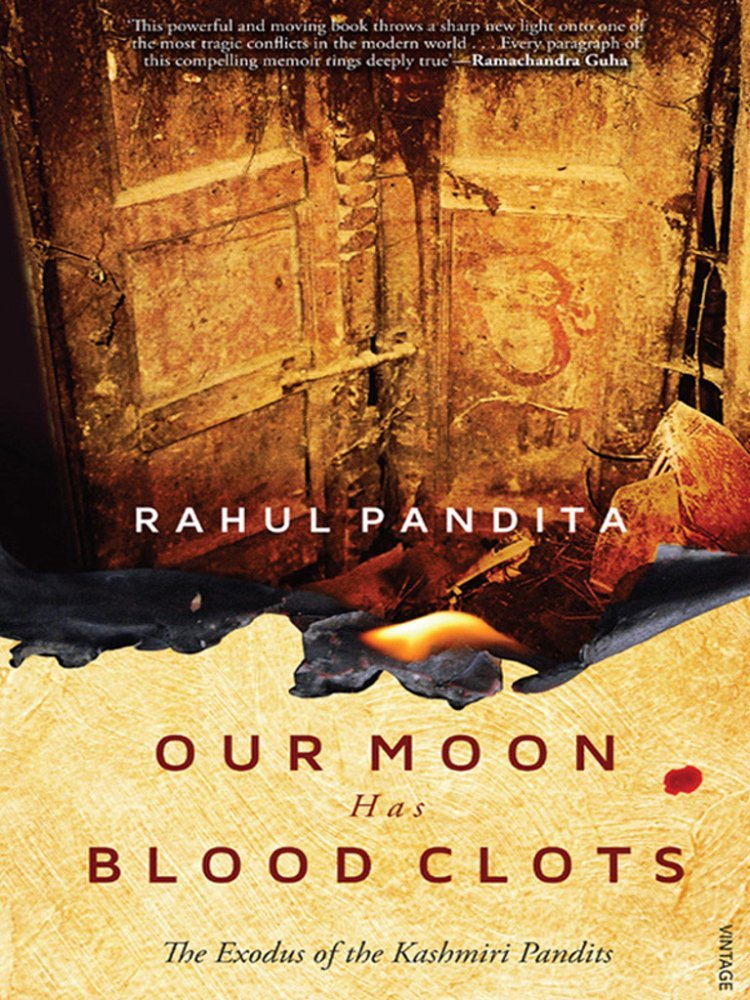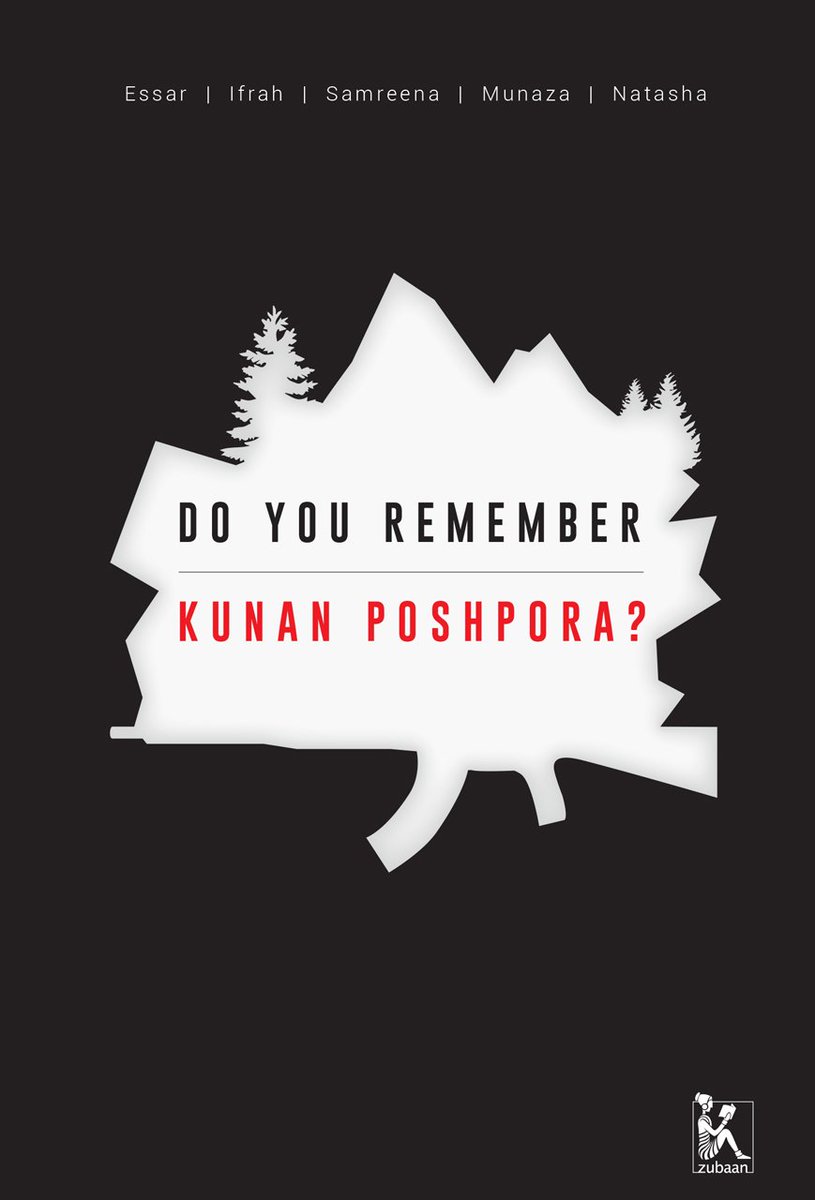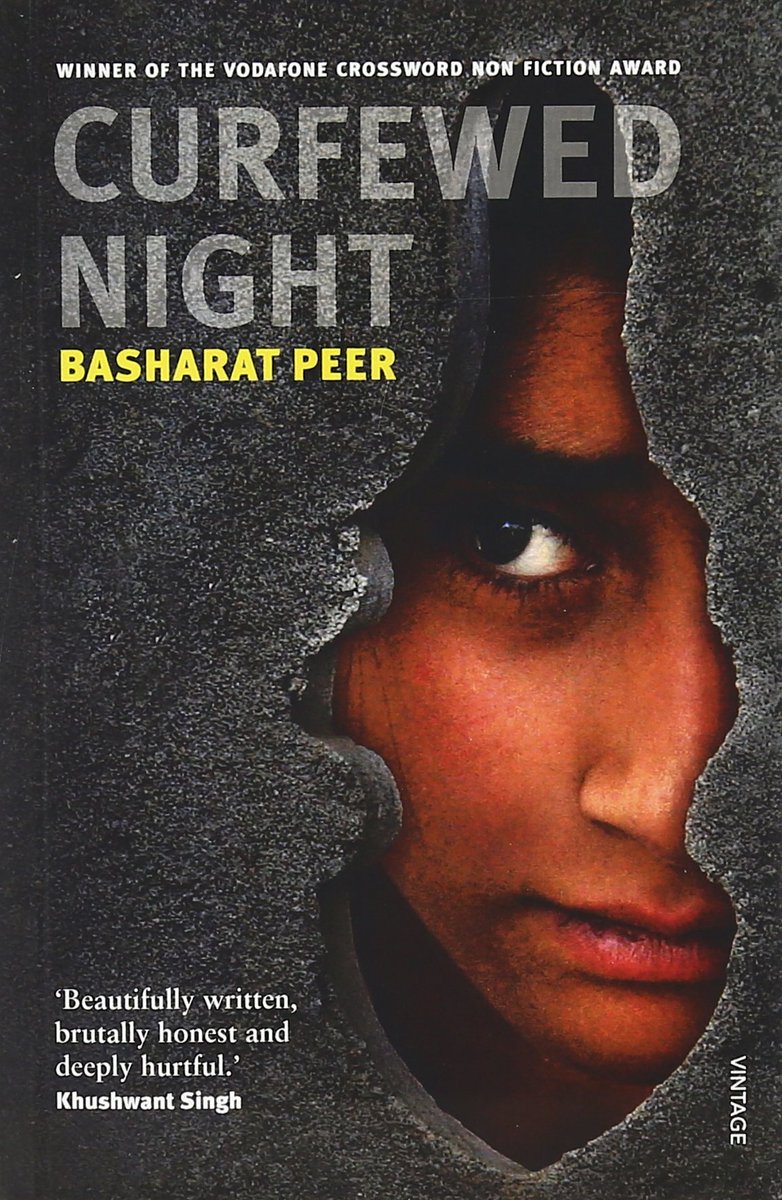[THREAD: VALLEY OF FLOWERS, FLOWERS OF CARNAGE — II]
1/166
A convoy of 4x4 army vehicles left the Trehgam base at 9 on the night of Feb 23, 1991 and barreled down a snow-covered road through the mountains. It was a bright moonlit night.
...about to get very dark.
1/166
A convoy of 4x4 army vehicles left the Trehgam base at 9 on the night of Feb 23, 1991 and barreled down a snow-covered road through the mountains. It was a bright moonlit night.
...about to get very dark.
2/166
Led by a Col. K S Dalal, the convoy carried at least 125 armymen of the 4 Rajputana Rifles, 68 Mountain Brigade in 4 companies: Alpha, Bravo, Charlie, Delta. The brief was clear: Get there, seal exits, search every home.
A cordon-and-search operation.
Led by a Col. K S Dalal, the convoy carried at least 125 armymen of the 4 Rajputana Rifles, 68 Mountain Brigade in 4 companies: Alpha, Bravo, Charlie, Delta. The brief was clear: Get there, seal exits, search every home.
A cordon-and-search operation.
3/166
These operations are a standard response to any intel on a militant hideout in a village. This one was also triggered by one such tip. Of the 4 companies, Alpha and Delta were to "cordon," and Bravo and Charlie to "search."
Destination was an hour away.
These operations are a standard response to any intel on a militant hideout in a village. This one was also triggered by one such tip. Of the 4 companies, Alpha and Delta were to "cordon," and Bravo and Charlie to "search."
Destination was an hour away.
4/166
The protocol for these "searches" was very pragmatic. Men would be separated from their families for interrogation while their homes would be separately inspected for any hidden militant. At times, women would be interrogated too if needed. Fairly standard.
The protocol for these "searches" was very pragmatic. Men would be separated from their families for interrogation while their homes would be separately inspected for any hidden militant. At times, women would be interrogated too if needed. Fairly standard.
5/166
The destination that night was a village 6 miles of treacherous mountains from Trehgam.
By 11, the units were already in the village, had completely sealed all exits, and were tearing down doors. The search began.
The destination that night was a village 6 miles of treacherous mountains from Trehgam.
By 11, the units were already in the village, had completely sealed all exits, and were tearing down doors. The search began.
6/166
Standard protocol mandated prior announcements over mosque loudspeakers directing the men to assemble. It also mandated taking the local village headman in confidence.
Neither was followed tonight.
Standard protocol mandated prior announcements over mosque loudspeakers directing the men to assemble. It also mandated taking the local village headman in confidence.
Neither was followed tonight.
7/166
Men were torn out of homes and assaulted, lightbulbs and lanterns were smashed, and women were forced to stay behind.
These men were then herded into 3 makeshift "interrogation centers," basically barns made of mud and wood and thatched in straw.
Men were torn out of homes and assaulted, lightbulbs and lanterns were smashed, and women were forced to stay behind.
These men were then herded into 3 makeshift "interrogation centers," basically barns made of mud and wood and thatched in straw.
8/166
Do recall that we& #39;re talking late February here. Men are huddled in these barns to await their turn.
Barefoot. On snow.
Turn for what? Officially, interrogation. Unofficially, paralyzing pain that& #39;d cripple many for life.
Do recall that we& #39;re talking late February here. Men are huddled in these barns to await their turn.
Barefoot. On snow.
Turn for what? Officially, interrogation. Unofficially, paralyzing pain that& #39;d cripple many for life.
9/166
They were dunked in chili water, hit with batons, tazed in their genitals, and kicked indiscriminately, mere yards from home.
Although the legs had gone numb with cold, it hurt. And when it did, they screamed. And when they stopped, they heard screams from home.
They were dunked in chili water, hit with batons, tazed in their genitals, and kicked indiscriminately, mere yards from home.
Although the legs had gone numb with cold, it hurt. And when it did, they screamed. And when they stopped, they heard screams from home.
10/166
The night looped through this more times than anyone remembers. Many of them suffered permanent disability from that interrogation. Some, like Abli Dar, even succumbed to it years later.
This was only part of the horror though, the night had far more up its sleeves.
The night looped through this more times than anyone remembers. Many of them suffered permanent disability from that interrogation. Some, like Abli Dar, even succumbed to it years later.
This was only part of the horror though, the night had far more up its sleeves.
11/166
Those screams from homes, remember?
Only men were at the interrogation centers. Their wives, moms, daughters, and sisters, all forced to stay home.
With no lights (that trashed the lanterns, remember?). Under army supervision.
Those screams from homes, remember?
Only men were at the interrogation centers. Their wives, moms, daughters, and sisters, all forced to stay home.
With no lights (that trashed the lanterns, remember?). Under army supervision.
12/166
The soldiers drank. Both before and during the rape. Grandmoms, daughters, kids, disabled, pregnant — there was no discrimination.
All were raped.
Often next to each other.
Repeatedly.
In as many creative ways as the pervert in you can imagine.
The soldiers drank. Both before and during the rape. Grandmoms, daughters, kids, disabled, pregnant — there was no discrimination.
All were raped.
Often next to each other.
Repeatedly.
In as many creative ways as the pervert in you can imagine.
13/166
One toddler was tossed out the window because he was being too noisy. One pregnant woman was raped so violently, she delivered a baby with a fractured limb days later.
The inner cordon was finally lifted at 9 the following morning. But the outer one remained. Until...
One toddler was tossed out the window because he was being too noisy. One pregnant woman was raped so violently, she delivered a baby with a fractured limb days later.
The inner cordon was finally lifted at 9 the following morning. But the outer one remained. Until...
14/166
The local police signed an NOC saying the operation was conducted peacefully with no damage whatsoever to life, limb, or property. Needless to say, this was done under duress.
NOC signed, the village was finally free to seek medical help. The outer cordon was lifted.
The local police signed an NOC saying the operation was conducted peacefully with no damage whatsoever to life, limb, or property. Needless to say, this was done under duress.
NOC signed, the village was finally free to seek medical help. The outer cordon was lifted.
15/166
This experience was shared by another village too, its twin. The same night.
And it wasn& #39;t a first. The scale maybe, but not the event itself. Kupwara, the district this took place in, has seen more army atrocities than the other 9 in the valley. And for a reason.
This experience was shared by another village too, its twin. The same night.
And it wasn& #39;t a first. The scale maybe, but not the event itself. Kupwara, the district this took place in, has seen more army atrocities than the other 9 in the valley. And for a reason.
16/166
Kupwara& #39;s misfortune is its location. Being over twice as far from your state capital as from the single most hostile border on Earth isn& #39;t a very safe idea. The villages we& #39;re talking about are almost within earshot of Azad Kashmir: Kunan and its twin, Poshpora.
Kupwara& #39;s misfortune is its location. Being over twice as far from your state capital as from the single most hostile border on Earth isn& #39;t a very safe idea. The villages we& #39;re talking about are almost within earshot of Azad Kashmir: Kunan and its twin, Poshpora.
17/166
Almost 3 decades and untold recurrences down the line, the villages still await closure. As of 2018, the case was in the highest court of the land, after multiple dismissals and charges of exaggeration.
Meanwhile, the state that referred the case has ceased to exist.
Almost 3 decades and untold recurrences down the line, the villages still await closure. As of 2018, the case was in the highest court of the land, after multiple dismissals and charges of exaggeration.
Meanwhile, the state that referred the case has ceased to exist.
18/166
Question is, whence this impunity? The answer lies in the Quit India Movement.
1942.
Gandhi and his men were growing harder to manage by the day. With Hitler making life miserable back home and the crown jewel slipping out of their hands, the British needed to act.
Question is, whence this impunity? The answer lies in the Quit India Movement.
1942.
Gandhi and his men were growing harder to manage by the day. With Hitler making life miserable back home and the crown jewel slipping out of their hands, the British needed to act.
19/166
And act that did. It was August 15, exactly 5 years before Independence. Britain launched a new law to deal with troublemakers. It was called the Armed Forces Special Powers Ordinance or AFSPO.
This was the precursor to something far more draconian.
And act that did. It was August 15, exactly 5 years before Independence. Britain launched a new law to deal with troublemakers. It was called the Armed Forces Special Powers Ordinance or AFSPO.
This was the precursor to something far more draconian.
20/166
When India went free in 1947, it wasn& #39;t exactly all of it. The monolith we see today was decades away. Many regions that hitherto fought the British, now fought India.
One of them was the Northeast. The Nagas were in open rebellion and wanted out. Much blood was spilled.
When India went free in 1947, it wasn& #39;t exactly all of it. The monolith we see today was decades away. Many regions that hitherto fought the British, now fought India.
One of them was the Northeast. The Nagas were in open rebellion and wanted out. Much blood was spilled.
21/166
When the state machinery failed to contain the mess with laws available at its disposal, and the Naga Nationalist Council seceded to form a parallel government, in 1958, India repurposed AFSPO as first AF (Assam and Manipur) SPO and then AFSPA.
When the state machinery failed to contain the mess with laws available at its disposal, and the Naga Nationalist Council seceded to form a parallel government, in 1958, India repurposed AFSPO as first AF (Assam and Manipur) SPO and then AFSPA.
22/166
AFSPA is a 7-section act that aims to empower the government against what it deems "antinational" elements in what it calls "disturbed areas."
Before we go into its story any further, it& #39;s important to understand what it entails. Section by section.
AFSPA is a 7-section act that aims to empower the government against what it deems "antinational" elements in what it calls "disturbed areas."
Before we go into its story any further, it& #39;s important to understand what it entails. Section by section.
23/166
Section 3 is about labeling an area as "disturbed." It takes away that privilege from the elected state government and places it in the hands of the Union. Many say it& #39;s undemocratic and it& #39;s not hard to see why given it runs right against the spirit of federalism.
Section 3 is about labeling an area as "disturbed." It takes away that privilege from the elected state government and places it in the hands of the Union. Many say it& #39;s undemocratic and it& #39;s not hard to see why given it runs right against the spirit of federalism.
24/166
Section 4 gives members of the armed forces, both commissioned and non-commissioned (this includes havildars and jawans), the authority to raid homes, make arrests, and shoot to kill.
Without warrant.
Sure it& #39;s draconian but hold your horses...
Section 4 gives members of the armed forces, both commissioned and non-commissioned (this includes havildars and jawans), the authority to raid homes, make arrests, and shoot to kill.
Without warrant.
Sure it& #39;s draconian but hold your horses...
25/166
Section 6. This is where the word draconian gets redefined. This section grants absolute immunity to any armyman from any legal action.
Absolute.
Even Reginald Dyer was accorded less immunity.
Whence the impunity? This is whence.
Section 6. This is where the word draconian gets redefined. This section grants absolute immunity to any armyman from any legal action.
Absolute.
Even Reginald Dyer was accorded less immunity.
Whence the impunity? This is whence.
26/166
Back when the act was first promulgated in 1958, a first in independent India, Naga Hills were part of Assam. Although initially, floated for this one state, the act was gradually extended to all of Northeast and by 1983, to Punjab.
Back when the act was first promulgated in 1958, a first in independent India, Naga Hills were part of Assam. Although initially, floated for this one state, the act was gradually extended to all of Northeast and by 1983, to Punjab.
27/166
On July 5, 1990, 3 years after being lifted in Punjab, AFSPA finally came to Jammu and Kashmir.
Less than 8 months later, the act would be put to test in 2 godforsaken villages in the district of Kupwara.
On July 5, 1990, 3 years after being lifted in Punjab, AFSPA finally came to Jammu and Kashmir.
Less than 8 months later, the act would be put to test in 2 godforsaken villages in the district of Kupwara.
28/166
At least 23 women of all age and physical conditions were violated that night. Repeatedly. With zero legal recourse.
Section 6, the one that lent AFSPA its canines and its abuses immunity was finally struck down by the SC on July 8, 2016. But closure remains elusive.
At least 23 women of all age and physical conditions were violated that night. Repeatedly. With zero legal recourse.
Section 6, the one that lent AFSPA its canines and its abuses immunity was finally struck down by the SC on July 8, 2016. But closure remains elusive.
29/166
What went down in Kunan-Poshpora that night wasn& #39;t possible without the ironclad sanctuary of AFSPA. Those days, almost all of J&K was named a "disturbed area." In other words, the world& #39;s largest shooting range for men in uniform.
But how did it even come to this?
What went down in Kunan-Poshpora that night wasn& #39;t possible without the ironclad sanctuary of AFSPA. Those days, almost all of J&K was named a "disturbed area." In other words, the world& #39;s largest shooting range for men in uniform.
But how did it even come to this?
30/166
Many say the answer lies in 1987, but truly speaking that was just a catalyst, not the trigger. That lies further back in time.
1899.
Pratap Singh was on the throne and Muslims were largely at the bottom of the Kashmiri socioeconomic pyramid.
Many say the answer lies in 1987, but truly speaking that was just a catalyst, not the trigger. That lies further back in time.
1899.
Pratap Singh was on the throne and Muslims were largely at the bottom of the Kashmiri socioeconomic pyramid.
31/166
Now Pratap Singh was a good man. At least in perspective. He reversed much of his father& #39;s tax terrorism, including absurdities like Sanskrit tax and Muslim marriage tax. He even slashed taxes on farm produce from 75% to 30%. This was a welcome change.
Almost.
Now Pratap Singh was a good man. At least in perspective. He reversed much of his father& #39;s tax terrorism, including absurdities like Sanskrit tax and Muslim marriage tax. He even slashed taxes on farm produce from 75% to 30%. This was a welcome change.
Almost.
32/166
Pratap Singh& #39;s reforms were great. But not enough to counter the public resentment that has bottled up from generations of tyranny.
In 1899, a Maulana Rasul Shah launched what he called the Anjuman Nusrat ul-Islam, an Islamic reform movement.
Pratap Singh& #39;s reforms were great. But not enough to counter the public resentment that has bottled up from generations of tyranny.
In 1899, a Maulana Rasul Shah launched what he called the Anjuman Nusrat ul-Islam, an Islamic reform movement.
33/166
At this point, popular Muslim sentiments were also gravitating toward religion, which was increasingly seen as a sanctuary from oppression.
Maulana& #39;s initiative was a counter. Not to the Dogra tyranny as much as to Sufism and unislamic "innovations" or bida& #39;at.
At this point, popular Muslim sentiments were also gravitating toward religion, which was increasingly seen as a sanctuary from oppression.
Maulana& #39;s initiative was a counter. Not to the Dogra tyranny as much as to Sufism and unislamic "innovations" or bida& #39;at.
34/166
Over the next decade, this outfit had opened the Islamiya High School and the Oriental College, both in Srinagar. These initiatives were in line with Maulana& #39;s commitment to Islamizing education in the Valley. It was a well-considered manoeuvre.
Over the next decade, this outfit had opened the Islamiya High School and the Oriental College, both in Srinagar. These initiatives were in line with Maulana& #39;s commitment to Islamizing education in the Valley. It was a well-considered manoeuvre.
35/166
Later, the group would hop aboard 2 pan-India bandwagons — Khilafat and Ahl-i-Hadith. The former to restore the Caliphate in Turkey, the latter to bring it to India. This also helped amp up its campaigns against the Dogra autocracy.
Then something happened in 1928.
Later, the group would hop aboard 2 pan-India bandwagons — Khilafat and Ahl-i-Hadith. The former to restore the Caliphate in Turkey, the latter to bring it to India. This also helped amp up its campaigns against the Dogra autocracy.
Then something happened in 1928.
36/166
When Atatürk introduced Turkey to radical secularism in 1924, it triggered unrest. Understandably in Turkey but more so everywhere else. Ottoman restoration became a rally call for Muslims not only in the Arab world but on the Indian subcontinent too.
When Atatürk introduced Turkey to radical secularism in 1924, it triggered unrest. Understandably in Turkey but more so everywhere else. Ottoman restoration became a rally call for Muslims not only in the Arab world but on the Indian subcontinent too.
37/166
India& #39;s Khilafat Movement was one such campaign. Another brewed about 2,600 miles away in Ismailia, a small town on the west bank of the Suez Canal. Egypt those days was under British occupation although with a king of its own. A new secular constitution was in force.
India& #39;s Khilafat Movement was one such campaign. Another brewed about 2,600 miles away in Ismailia, a small town on the west bank of the Suez Canal. Egypt those days was under British occupation although with a king of its own. A new secular constitution was in force.
38/166
Frustrated by Britain& #39;s labor practices, disillusioned by King Fuad& #39;s secularism, and in contempt of both, voices of dissent started organizing in groups. One such voice came from a 22-year-old schoolteacher in Ismailia named Hassan Ahmed Abdel Rahman Muhammed al-Banna.
Frustrated by Britain& #39;s labor practices, disillusioned by King Fuad& #39;s secularism, and in contempt of both, voices of dissent started organizing in groups. One such voice came from a 22-year-old schoolteacher in Ismailia named Hassan Ahmed Abdel Rahman Muhammed al-Banna.
39/166
In 1928, al-Banna teamed up with 6 anonymous canal workers and officially launched what would outlive him by decades. He named it Jamā& #39;at al-Ikhwān al-Muslimīn. The outfit continues to be in existence to this date. We know it as the Muslim Brotherhood.
In 1928, al-Banna teamed up with 6 anonymous canal workers and officially launched what would outlive him by decades. He named it Jamā& #39;at al-Ikhwān al-Muslimīn. The outfit continues to be in existence to this date. We know it as the Muslim Brotherhood.
40/166
The Brotherhood quickly burgeoned into a transnational Islamist organization with ambitions including purification of Islam and restoration of the Caliphate. By 1940s, it& #39;d become the ideological template for similar exercises all over the world. In India too.
The Brotherhood quickly burgeoned into a transnational Islamist organization with ambitions including purification of Islam and restoration of the Caliphate. By 1940s, it& #39;d become the ideological template for similar exercises all over the world. In India too.
41/166
One Indian heavily influenced by this template was a recently-sacked 38-year-old college professor in Lahore named Abul A& #39;lā Mawdūdī. This gentleman was super keen on bringing back the Sharia jurisprudence just like the good old days of Aurangzeb.
One Indian heavily influenced by this template was a recently-sacked 38-year-old college professor in Lahore named Abul A& #39;lā Mawdūdī. This gentleman was super keen on bringing back the Sharia jurisprudence just like the good old days of Aurangzeb.
42/166
To that end, on Aug 26, 1941, Mawdūdī started a new organization modelled after the one by Egypt& #39;s al-Banna. He named it Jamā& #39;at-e-Islami. This distant relative of Sir Sayyid Ahmed Khan was so dogmatic that his ideas didn& #39;t jive with even the Jamiat Ulema-e-Hind.
To that end, on Aug 26, 1941, Mawdūdī started a new organization modelled after the one by Egypt& #39;s al-Banna. He named it Jamā& #39;at-e-Islami. This distant relative of Sir Sayyid Ahmed Khan was so dogmatic that his ideas didn& #39;t jive with even the Jamiat Ulema-e-Hind.
43/166
For all his Islamist ambitions, Mawdūdī was peculiar in his bitter opposition to Jinnah& #39;s 2-nation theory. Partition, he maintained, was against ummat al-Islām, a core supra-nationalistic doctrine that prohibits division of Muslims between political entities.
For all his Islamist ambitions, Mawdūdī was peculiar in his bitter opposition to Jinnah& #39;s 2-nation theory. Partition, he maintained, was against ummat al-Islām, a core supra-nationalistic doctrine that prohibits division of Muslims between political entities.
44/166
Mawdūdī envisioned a united, independent India with a political system defined under the strictest possible interpretation of Sharia. Gender segregation, veiling of women, abolition of interest, hudd (corporeal) penalties like stoning to death and amputation...all of it.
Mawdūdī envisioned a united, independent India with a political system defined under the strictest possible interpretation of Sharia. Gender segregation, veiling of women, abolition of interest, hudd (corporeal) penalties like stoning to death and amputation...all of it.
45/166
But the partition happened anyway. And when it did, Mawdūdī moved JI to the new Islamic republic. At this point, his vision had evolved to an eventual reunification under Pakistan. This vision and his exegesis of Qur& #39;an would later inspire Zia& #39;s Shariazation of Pakistan.
But the partition happened anyway. And when it did, Mawdūdī moved JI to the new Islamic republic. At this point, his vision had evolved to an eventual reunification under Pakistan. This vision and his exegesis of Qur& #39;an would later inspire Zia& #39;s Shariazation of Pakistan.
46/166
But not everyone made the move. Those who remained, reorganized as Jamā& #39;at-e-Islami Hind with headquarter in Allahabad. The JI had already started making its presence felt in Kashmir long before the partition. As a grassroot movement against all kinds of oppression.
But not everyone made the move. Those who remained, reorganized as Jamā& #39;at-e-Islami Hind with headquarter in Allahabad. The JI had already started making its presence felt in Kashmir long before the partition. As a grassroot movement against all kinds of oppression.
47/166
In 1945 already, the JI had emerged as a 3rd force in the Valley, a sociopolitical campaign, against both Muslim Conference& #39;s loose Islam and Sheikh Abdullah& #39;s secularism. It wanted a strictly Islamic polity in Kashmir free from the "evils of secularism and socialism."
In 1945 already, the JI had emerged as a 3rd force in the Valley, a sociopolitical campaign, against both Muslim Conference& #39;s loose Islam and Sheikh Abdullah& #39;s secularism. It wanted a strictly Islamic polity in Kashmir free from the "evils of secularism and socialism."
48/166
During and after partition, the Jamā& #39;at advocated reunification under Pakistan although most Kashmiri youths supported Abdullah& #39;s pro-India politics. In 1952, the JIH spun off its Kashmir operations as Jamā& #39;at-e-Islami J&K (JIJK) due to the region& #39;s disputed status.
During and after partition, the Jamā& #39;at advocated reunification under Pakistan although most Kashmiri youths supported Abdullah& #39;s pro-India politics. In 1952, the JIH spun off its Kashmir operations as Jamā& #39;at-e-Islami J&K (JIJK) due to the region& #39;s disputed status.
49/166
Much happened during and after Partition. J&K went from principality to state and endured an unofficial split along what was then a Ceasefire Line, later Line of Control. At this point many wanted Kashmir with India, many wanted it with Pakistan. But some wanted neither.
Much happened during and after Partition. J&K went from principality to state and endured an unofficial split along what was then a Ceasefire Line, later Line of Control. At this point many wanted Kashmir with India, many wanted it with Pakistan. But some wanted neither.
50/166
The first major call for absolute sovereignty came from Muzaffarabad in Azad Kashmir in April 1965. Amanullah Khan, a Law grad from Karachi floated first the Kashmir Independence Committee, then the Plebiscite Front to lobby for, well, a plebiscite.
The first major call for absolute sovereignty came from Muzaffarabad in Azad Kashmir in April 1965. Amanullah Khan, a Law grad from Karachi floated first the Kashmir Independence Committee, then the Plebiscite Front to lobby for, well, a plebiscite.
51/166
One of the founding members was Muhammad Maqbool Butt. Remember this name, it& #39;ll surface later.
In India.
But first, let& #39;s take a little detour to Algeria. The nation was under French occupation those days and had just come out of WWII having suffered heavy casualties.
One of the founding members was Muhammad Maqbool Butt. Remember this name, it& #39;ll surface later.
In India.
But first, let& #39;s take a little detour to Algeria. The nation was under French occupation those days and had just come out of WWII having suffered heavy casualties.
52/166
Both Algeria and India were imperial colonies. But unlike India, Algeria enjoyed a semblance of self-rule. I say semblance because although it did have an elected Assembly, 2 things made it less-than-democratic:
1. Double electoral college system
2. Seat reservation
Both Algeria and India were imperial colonies. But unlike India, Algeria enjoyed a semblance of self-rule. I say semblance because although it did have an elected Assembly, 2 things made it less-than-democratic:
1. Double electoral college system
2. Seat reservation
53/166
Double electoral college meant less direct link between electorate and the elected. And reservation stipulated equal division of seats between French settlers and local Muslims. This was unjust representation as the latter greatly outnumbered the former.
Double electoral college meant less direct link between electorate and the elected. And reservation stipulated equal division of seats between French settlers and local Muslims. This was unjust representation as the latter greatly outnumbered the former.
54/166
The material losses from the Great War coupled with this sham democracy proceed a heady mix and pushed many Algerians into revolt, both overt and otherwise. Movements started sprouting all over the country. One such movement was called Jabhatu l-Taḥrīri l-Waṭanī.
The material losses from the Great War coupled with this sham democracy proceed a heady mix and pushed many Algerians into revolt, both overt and otherwise. Movements started sprouting all over the country. One such movement was called Jabhatu l-Taḥrīri l-Waṭanī.
55/166
You probably don& #39;t recognize this name because it& #39;s better known by its French translation, Front de libération nationale or FLN. Still blank? How about National Liberation Front?
Established on Oct 10, 1954, the FLN inaugurated the Algerian War on Nov 1 the same year.
You probably don& #39;t recognize this name because it& #39;s better known by its French translation, Front de libération nationale or FLN. Still blank? How about National Liberation Front?
Established on Oct 10, 1954, the FLN inaugurated the Algerian War on Nov 1 the same year.
56/166
Back home in Indian Kashmir, Sheikh Abdullah had grown considerably disenchanted by Nehru by then and started making Kashmir& #39;s autonomy a plank point. 1949 had seen the end of the first Indo-Pak conflict and the drawing of what would later become the Line of Control.
Back home in Indian Kashmir, Sheikh Abdullah had grown considerably disenchanted by Nehru by then and started making Kashmir& #39;s autonomy a plank point. 1949 had seen the end of the first Indo-Pak conflict and the drawing of what would later become the Line of Control.
57/166
Abdullah& #39;s first big-ticket move after this ceasefire was the Big Landed Estates Abolition Act. This was controversial in more ways than one but we& #39;ll not get into the details here. Suffice it to say that it expanded the gulf between him and Nehru beyond bridging.
Abdullah& #39;s first big-ticket move after this ceasefire was the Big Landed Estates Abolition Act. This was controversial in more ways than one but we& #39;ll not get into the details here. Suffice it to say that it expanded the gulf between him and Nehru beyond bridging.
58/166
The chief architect of this act, even though Abdullah gets all the credit, was his second-in-command, a man from Anantnag named Mirza Mohammad Afzal Bég. Popularly known as the Fakhr-e-Kashmir, Bég is said to be the brain behind Sheikh Abdullah.
The chief architect of this act, even though Abdullah gets all the credit, was his second-in-command, a man from Anantnag named Mirza Mohammad Afzal Bég. Popularly known as the Fakhr-e-Kashmir, Bég is said to be the brain behind Sheikh Abdullah.
59/166
It was Bég who, in an attempt to mobilize demand for the promised plebiscite, started a new political platform on Aug 9, 1955.
The All Jammu & Kashmir Plebiscite Front.
Abdullah patronized it but didn& #39;t join it officially. All this while, the war in Algeria raged on.
It was Bég who, in an attempt to mobilize demand for the promised plebiscite, started a new political platform on Aug 9, 1955.
The All Jammu & Kashmir Plebiscite Front.
Abdullah patronized it but didn& #39;t join it officially. All this while, the war in Algeria raged on.
60/166
In 1961, this war (Guerre d& #39;Algérie or Tagrawla Tadzayrit) ended with emergence of Charles de Gaulle& #39;s Cinquième République (Fifth Republic) and People& #39;s Democratic Republic of Algeria as an independent nation.
This worked! Armed guerrilla offensive worked!
In 1961, this war (Guerre d& #39;Algérie or Tagrawla Tadzayrit) ended with emergence of Charles de Gaulle& #39;s Cinquième République (Fifth Republic) and People& #39;s Democratic Republic of Algeria as an independent nation.
This worked! Armed guerrilla offensive worked!
61/166
The news of FLN& #39;s success resonated with a Law student 5,000 miles away in Karachi. By 1962, Amanullah Khan had espoused the cause of Azad Kashmir& #39;s absolute sovereignty.
Complete independence.
To that end, he created the Mahaz-i-Raishumari in April 1965.
The news of FLN& #39;s success resonated with a Law student 5,000 miles away in Karachi. By 1962, Amanullah Khan had espoused the cause of Azad Kashmir& #39;s absolute sovereignty.
Complete independence.
To that end, he created the Mahaz-i-Raishumari in April 1965.
62/166
MiR was better recognized as the Azad Kashmir Plebiscite Front. The name sounds like what Sheikh Abdullah did across the border 10 years ago and that& #39;s because the latter inspired the former. But the AKPF wasn& #39;t a militant organization.
MiR was better recognized as the Azad Kashmir Plebiscite Front. The name sounds like what Sheikh Abdullah did across the border 10 years ago and that& #39;s because the latter inspired the former. But the AKPF wasn& #39;t a militant organization.
63/166
That said, Amanullah Khan wasn& #39;t entirely averse to the idea of picking up arms of needed. This idea further gained prominence in his head when India and Pakistan went to war within days of him incorporating the Plebiscite Front. But the idea was shot down by the group.
That said, Amanullah Khan wasn& #39;t entirely averse to the idea of picking up arms of needed. This idea further gained prominence in his head when India and Pakistan went to war within days of him incorporating the Plebiscite Front. But the idea was shot down by the group.
64/166
That& #39;s when the Algerian influence kicked in. Inspired by the FLN& #39;s success in the Algerian War and aided by Muhammad Maqbool Butt (remember the name?), Khan fashioned his own militant wing, the National Liberation Front. This was a month before the Indo-Pak War ended.
That& #39;s when the Algerian influence kicked in. Inspired by the FLN& #39;s success in the Algerian War and aided by Muhammad Maqbool Butt (remember the name?), Khan fashioned his own militant wing, the National Liberation Front. This was a month before the Indo-Pak War ended.
65/166
Khan& #39;s ambition grew rapidly with time and "freedom for Azad Kashmir" soon became "freedom for all of Jammu and Kashmir." Executing this vision warranted militant activities beyond the confines of Azad Kashmir. He needed manpower on the other side of the LoC.
Khan& #39;s ambition grew rapidly with time and "freedom for Azad Kashmir" soon became "freedom for all of Jammu and Kashmir." Executing this vision warranted militant activities beyond the confines of Azad Kashmir. He needed manpower on the other side of the LoC.
66/166
That& #39;s where Muhammad Maqbool Butt comes in. He made several illegal scouting trips across the border to recruit young Kashmiri locals. One such trip was on June 10, 1966. This time, thanks to a snitch within his inner circle, he got ambushed by Indian forces.
That& #39;s where Muhammad Maqbool Butt comes in. He made several illegal scouting trips across the border to recruit young Kashmiri locals. One such trip was on June 10, 1966. This time, thanks to a snitch within his inner circle, he got ambushed by Indian forces.
67/166
Butt lost some men in the shootout. He also killed one. It was Amar Chand, an Indian security officer. When the dust settles, Butt was in handcuffs awaiting trial at the Sunstar High Court for murder of a police officer. The verdict came 2 years later.
Butt lost some men in the shootout. He also killed one. It was Amar Chand, an Indian security officer. When the dust settles, Butt was in handcuffs awaiting trial at the Sunstar High Court for murder of a police officer. The verdict came 2 years later.
68/166
After what many call a botched trial, Judge Neelkanth Ganjoo awarded the death penalty to Maqbool Butt for the murder of Amar Chand. But Butt didn& #39;t hang right away, the verdict was challenged in the Supreme Court of India. Serious maneuvers were employed to save him.
After what many call a botched trial, Judge Neelkanth Ganjoo awarded the death penalty to Maqbool Butt for the murder of Amar Chand. But Butt didn& #39;t hang right away, the verdict was challenged in the Supreme Court of India. Serious maneuvers were employed to save him.
69/166
Butt& #39;s arrest scandalized the Front in Azad Kashmir. Remember, this body was not in favor of militant activities. NLF was a Amanullah Khan& #39;s personal project. Learning of its militant activities, the Plebiscite Front immediately moved to cut it off.
Butt& #39;s arrest scandalized the Front in Azad Kashmir. Remember, this body was not in favor of militant activities. NLF was a Amanullah Khan& #39;s personal project. Learning of its militant activities, the Plebiscite Front immediately moved to cut it off.
70/166
But Butt& #39;s death penalty wasn& #39;t the only thing that happened in 1968. His escape was one too. He literally tunneled his way out of the prison and escaped to Azad Kashmir. This sounds like a sensation, right? It was. Earned him much respect among his peers too.
But Butt& #39;s death penalty wasn& #39;t the only thing that happened in 1968. His escape was one too. He literally tunneled his way out of the prison and escaped to Azad Kashmir. This sounds like a sensation, right? It was. Earned him much respect among his peers too.
71/166
Eventually, awed by Butt& #39;s determination, the Plebiscite Front lifted its embargo on the NLF.
Even at this point though, neither Butt nor NLF received any support, material or otherwise, from Pakistan. He was rather hounded and brutalized by the Pakistani Army.
Eventually, awed by Butt& #39;s determination, the Plebiscite Front lifted its embargo on the NLF.
Even at this point though, neither Butt nor NLF received any support, material or otherwise, from Pakistan. He was rather hounded and brutalized by the Pakistani Army.
72/166
They suspected Butt of being an Indian mole. Fact is, the ISI was running its own missions in the region and didn& #39;t want those exposed due to amateur acts by the likes of Butt and Khan. Butt& #39;s stint in an Indian prison made him a compromised subject in their eyes.
They suspected Butt of being an Indian mole. Fact is, the ISI was running its own missions in the region and didn& #39;t want those exposed due to amateur acts by the likes of Butt and Khan. Butt& #39;s stint in an Indian prison made him a compromised subject in their eyes.
73/166
Hounded by Pakistan& #39;s establishment, Khan moved to England and reorganized his groups as the Jammu and Kashmir Liberation Front or JKLF in 1977. He had to do it without his most trusted lieutenant, Maqbool Butt, though. That& #39;s because the latter was in jail.
Hounded by Pakistan& #39;s establishment, Khan moved to England and reorganized his groups as the Jammu and Kashmir Liberation Front or JKLF in 1977. He had to do it without his most trusted lieutenant, Maqbool Butt, though. That& #39;s because the latter was in jail.
74/166
In 1976, Butt had crossed over into Indian Kashmir once again and this time, tried robbing a bank for funds. It& #39;s during this robbery that he was caught by Indian officers once again and hauled to Delhi to be imprisoned at Tihar.
So the JKLF formed without Butt.
In 1976, Butt had crossed over into Indian Kashmir once again and this time, tried robbing a bank for funds. It& #39;s during this robbery that he was caught by Indian officers once again and hauled to Delhi to be imprisoned at Tihar.
So the JKLF formed without Butt.
75/166
At this point, I& #39;ll reference 2 international events that helped catalyze this agitation for free Kashmir on either side of the LoC. One was in Afghanistan, the other in Iran. Radical Islam was gaining prominence in both theaters and history was taking a decisive turn.
At this point, I& #39;ll reference 2 international events that helped catalyze this agitation for free Kashmir on either side of the LoC. One was in Afghanistan, the other in Iran. Radical Islam was gaining prominence in both theaters and history was taking a decisive turn.
76/166
Fundamentalist Shi& #39;as successfully rose against a secular Shah in Iran and on Feb 11, 1979, installed Sayyid Ruhollah Musavi Khomeini, the Ayatollah, as the Supreme Leader. Iran was now a theocracy. History calls this Enqelâbe Irân or the Iranian Revolution.
Fundamentalist Shi& #39;as successfully rose against a secular Shah in Iran and on Feb 11, 1979, installed Sayyid Ruhollah Musavi Khomeini, the Ayatollah, as the Supreme Leader. Iran was now a theocracy. History calls this Enqelâbe Irân or the Iranian Revolution.
77/166
Later same year, Sunni Mujahideen rose against the Soviet socialist proxy in Afghanistan. This would last 9 years and destroy Afghanistan beyond repair. But the very idea that men were picking up Kalashnikovs against a superpower in defense of Islam was a morale boost.
Later same year, Sunni Mujahideen rose against the Soviet socialist proxy in Afghanistan. This would last 9 years and destroy Afghanistan beyond repair. But the very idea that men were picking up Kalashnikovs against a superpower in defense of Islam was a morale boost.
78/166
These 2 events had profound effects on one religious body& #39;s theocratic ambitions in Kashmir.
Jama& #39;at-e-Islami Kashmir.
Remember them? But before the ambitions could see execution, came a body blow. In Pakistan.
On Sep 16, 1978, Gen. Zia-ul-Haq seized power.
These 2 events had profound effects on one religious body& #39;s theocratic ambitions in Kashmir.
Jama& #39;at-e-Islami Kashmir.
Remember them? But before the ambitions could see execution, came a body blow. In Pakistan.
On Sep 16, 1978, Gen. Zia-ul-Haq seized power.
79/166
Within 7 months of assuming power, Zia had Zulfikar Ali Bhutto hanged. The common perception then was that Jama& #39;at-e-Islami Pakistan was behind this coup. Since any dissent would be brutally crushed, all outrage poured into Kashmir. On Jama& #39;at-e-Islami Kashmir.
Within 7 months of assuming power, Zia had Zulfikar Ali Bhutto hanged. The common perception then was that Jama& #39;at-e-Islami Pakistan was behind this coup. Since any dissent would be brutally crushed, all outrage poured into Kashmir. On Jama& #39;at-e-Islami Kashmir.
80/166
Rioting and looting against the Jama& #39;at ensued and lasted 3 whole days. But the resentment petered out as quickly as it erupted. JIJK& #39;s (Jama& #39;at-e-Islami Jammu & Kashmir) fundamentalism appealed to the youth. At least enough to thaw any resentment against themselves.
Rioting and looting against the Jama& #39;at ensued and lasted 3 whole days. But the resentment petered out as quickly as it erupted. JIJK& #39;s (Jama& #39;at-e-Islami Jammu & Kashmir) fundamentalism appealed to the youth. At least enough to thaw any resentment against themselves.
81/166
The following year, the Supreme Court of India passed a verdict upholding Maqbool Butt& #39;s death penalty. This triggered mass agitation throughout the Valley as the youth believed the trial was unfair. Was it? I don& #39;t know. Some say it was an act of vendetta.
The following year, the Supreme Court of India passed a verdict upholding Maqbool Butt& #39;s death penalty. This triggered mass agitation throughout the Valley as the youth believed the trial was unfair. Was it? I don& #39;t know. Some say it was an act of vendetta.
82/166
Hard to tell, but JIJK disproved of both Butt& #39;s violence as well as his supporter& #39;s agitation. The Jama& #39;at wanted Kashmir& #39;s autonomy and Islamization, but constitutionally. Non-violently. Electorally. Violence was unislamic in its books.
Hard to tell, but JIJK disproved of both Butt& #39;s violence as well as his supporter& #39;s agitation. The Jama& #39;at wanted Kashmir& #39;s autonomy and Islamization, but constitutionally. Non-violently. Electorally. Violence was unislamic in its books.
83/166
In 1983, elections were held for the state Assembly and two political parties made their debut in J&K& #39;s electoral politics. One wanted Shariazation of Kashmir, the other wanted its saffronization. One was a Muslim JIJK, the other was a Hindutva BJP.
In 1983, elections were held for the state Assembly and two political parties made their debut in J&K& #39;s electoral politics. One wanted Shariazation of Kashmir, the other wanted its saffronization. One was a Muslim JIJK, the other was a Hindutva BJP.
84/166
Neither JIJK nor BJP could score a single seat though. The Assembly went to a brand new political scion, Farooq Abdullah. His father, Sheikh Abdullah, had just died the previous year, and his leftover glory might have had a role to play here.
Neither JIJK nor BJP could score a single seat though. The Assembly went to a brand new political scion, Farooq Abdullah. His father, Sheikh Abdullah, had just died the previous year, and his leftover glory might have had a role to play here.
85/166
What also helped Farooq Abdullah was a bitterly communal campaigning by none other than INC& #39;s Indira Gandhi. She raised the boogey of Muslim invasion in Jammu and it worked wonders at the ballot. Farooq, on his part, did well in the Valley.
What also helped Farooq Abdullah was a bitterly communal campaigning by none other than INC& #39;s Indira Gandhi. She raised the boogey of Muslim invasion in Jammu and it worked wonders at the ballot. Farooq, on his part, did well in the Valley.
86/166
In the wee hours of Feb 11, 1984, Muhammad Maqbool Butt was hanged and his remains buried in the jail premises at Tihar. This triggered intense anti-establishment reprisals. They were met with extraordinary military force. Which further intensified the reprisals.
In the wee hours of Feb 11, 1984, Muhammad Maqbool Butt was hanged and his remains buried in the jail premises at Tihar. This triggered intense anti-establishment reprisals. They were met with extraordinary military force. Which further intensified the reprisals.
87/166
The reprisals continued well into the summer and seeing this as Abdullah& #39;s failure, Indira had him replaced by his brother-in-law, Ghulam Mohammad Shah. But since Shah did not have people& #39;s mandate, he started a campaign of Islamist appeasement to win their trust.
The reprisals continued well into the summer and seeing this as Abdullah& #39;s failure, Indira had him replaced by his brother-in-law, Ghulam Mohammad Shah. But since Shah did not have people& #39;s mandate, he started a campaign of Islamist appeasement to win their trust.
88/166
Appealing to Islamic sentiments was easy in a social already flirting with radical ideas. Meanwhile, the Kashmir chapter of JKLF started smuggling Indian youths into Pakistan for arms training so they could be deployed in the Valley upon return. JIJK disproved.
Appealing to Islamic sentiments was easy in a social already flirting with radical ideas. Meanwhile, the Kashmir chapter of JKLF started smuggling Indian youths into Pakistan for arms training so they could be deployed in the Valley upon return. JIJK disproved.
89/166
Despite failing at the ballot in 1983, JIJK members still insisted on democratic means. One such member was Syed Ali Shah Geelani. In 1986 NC, the party in power, signed an accord with the INC which threatened to erode any remaining autonomy in the state.
Despite failing at the ballot in 1983, JIJK members still insisted on democratic means. One such member was Syed Ali Shah Geelani. In 1986 NC, the party in power, signed an accord with the INC which threatened to erode any remaining autonomy in the state.
90/166
To counter this move, JIJK partnered with other Islamist groups and formed the Muslim United Front (MUF). Agenda included complete autonomy in the immediate term, absolute Islamization in the near term, and merger with Pakistan in the long term.
To counter this move, JIJK partnered with other Islamist groups and formed the Muslim United Front (MUF). Agenda included complete autonomy in the immediate term, absolute Islamization in the near term, and merger with Pakistan in the long term.
91/166
But Shah, in his blind appeasement, got carried away and ended up building a mosque in the premises of an old Hindu temple near the secretariat in Srinagar for Muslim employees. This, as one would expect, triggered widespread communal riots in Hindu-majority Jammu.
But Shah, in his blind appeasement, got carried away and ended up building a mosque in the premises of an old Hindu temple near the secretariat in Srinagar for Muslim employees. This, as one would expect, triggered widespread communal riots in Hindu-majority Jammu.
92/166
Mosques were burned men were beaten up, and women were violated. Many Muslim homes were razed.l too. This triggered anti-Pandit riots in Anantnag where the same things were done to Hindus. The state was growing messier by the day and nobody knew what to do about it.
Mosques were burned men were beaten up, and women were violated. Many Muslim homes were razed.l too. This triggered anti-Pandit riots in Anantnag where the same things were done to Hindus. The state was growing messier by the day and nobody knew what to do about it.
93/166
When nothing worked, Governor Jagmohan stepped in. On March 12, the Shah govt. was dismissed and J&K came under President& #39;s Rule. This lasted almost a year. Fresh elections were held on Mar 23, 1987. This election is said to be a watershed moment in the state& #39;s history.
When nothing worked, Governor Jagmohan stepped in. On March 12, the Shah govt. was dismissed and J&K came under President& #39;s Rule. This lasted almost a year. Fresh elections were held on Mar 23, 1987. This election is said to be a watershed moment in the state& #39;s history.
94/166
This time, both BJP and MUF managed to score. But barely. BJP got 2 seats and MUF, 4. The latter& #39;s performance was suspect given it polled 32% of all Valley votes. It was rigged, everyone thought. This broke the camel& #39;s back.
MUF never contested elections again.
This time, both BJP and MUF managed to score. But barely. BJP got 2 seats and MUF, 4. The latter& #39;s performance was suspect given it polled 32% of all Valley votes. It was rigged, everyone thought. This broke the camel& #39;s back.
MUF never contested elections again.
95/166
Muslims all over J&K were convinced the elections were rigged in favor of anti-Muslim powers. Jagmohan came to be seen as motivated by personal Islamophobia. This didn& #39;t auger well for a region as radicalized and armed as Kashmir.
Things were about to get ugly.
Muslims all over J&K were convinced the elections were rigged in favor of anti-Muslim powers. Jagmohan came to be seen as motivated by personal Islamophobia. This didn& #39;t auger well for a region as radicalized and armed as Kashmir.
Things were about to get ugly.
96/166
In 1988, a JIJK member crossed the LoC to receive arms training.
It was Muhammad Ahsan Dar, remember this name.
This was a sign JIJK was shedding its affair with nonviolence and democratic politics. Jagmohan and JIJK were now on opposite ends of xenophobia.
In 1988, a JIJK member crossed the LoC to receive arms training.
It was Muhammad Ahsan Dar, remember this name.
This was a sign JIJK was shedding its affair with nonviolence and democratic politics. Jagmohan and JIJK were now on opposite ends of xenophobia.
97/166
The gulf between Pandits and Muslims was growing wider by the minute.
Sep 14, 1989, Tika Lal Taploo, a BJP worker was killed at home by armed JKLF men. This was the first big-ticket casualty of communalism in the state. From there on, it was open season.
The gulf between Pandits and Muslims was growing wider by the minute.
Sep 14, 1989, Tika Lal Taploo, a BJP worker was killed at home by armed JKLF men. This was the first big-ticket casualty of communalism in the state. From there on, it was open season.
98/166
On Nov 4, a man was ambushed by 3 armed men and shot dead in broad daylight on his way to work. This happened on the busy Hari Singh Street next to Srinagar High Court.
It was Justice Neelkanth Ganjoo.
21 years ago he had sentenced Muhammad Maqbool Butt to death.
On Nov 4, a man was ambushed by 3 armed men and shot dead in broad daylight on his way to work. This happened on the busy Hari Singh Street next to Srinagar High Court.
It was Justice Neelkanth Ganjoo.
21 years ago he had sentenced Muhammad Maqbool Butt to death.
99/166
Those days V P Singh was in the PMO and his Home Minister was a Sikh named Sardar Buta Singh. The unrest in Kashmir going out of hands, V P Singh brought in an Anantnag insider to replace the Sardar hoping for some liaison magic. This man was Mufti Mohammad Sayeed.
Those days V P Singh was in the PMO and his Home Minister was a Sikh named Sardar Buta Singh. The unrest in Kashmir going out of hands, V P Singh brought in an Anantnag insider to replace the Sardar hoping for some liaison magic. This man was Mufti Mohammad Sayeed.
100/166
Sayeed took charge as Union Home Minister on Dec 4, 1989. 4 days later something happened that would dramatically alter Kashmir& #39;s fate.
Someone abducted Dr. Rubaiya Sayeed, the Home Minister& #39;s daughter, on gunpoint barely 500 yards from home at Nowgam in Anantnag.
Sayeed took charge as Union Home Minister on Dec 4, 1989. 4 days later something happened that would dramatically alter Kashmir& #39;s fate.
Someone abducted Dr. Rubaiya Sayeed, the Home Minister& #39;s daughter, on gunpoint barely 500 yards from home at Nowgam in Anantnag.
101/166
Rubaiya was a 23-year-old medical intern the Lal Ded Memorial Woman& #39;s Hospital and her father& #39;s 3rd daughter. That afternoon, she was on a local bus headed home from the hospital. At around 3:45, four armed men forced her out and made away with her in a waiting car.
Rubaiya was a 23-year-old medical intern the Lal Ded Memorial Woman& #39;s Hospital and her father& #39;s 3rd daughter. That afternoon, she was on a local bus headed home from the hospital. At around 3:45, four armed men forced her out and made away with her in a waiting car.
102/166
This abduction rocked New Delhi and an inpatient wait for the random call ensued. The phone rang. The demands were made.
It was JKLF.
5 convicted insurgents.
That was the demand. Release them and have your daughter back, don& #39;t and we kill her. That simple.
This abduction rocked New Delhi and an inpatient wait for the random call ensued. The phone rang. The demands were made.
It was JKLF.
5 convicted insurgents.
That was the demand. Release them and have your daughter back, don& #39;t and we kill her. That simple.
103/166
It& #39;s no ordinary daughter. When your father is the sitting Home Minister of the country, you know you& #39;re not dying.
Everybody wanted to accept the deal. Only one man didn& #39;t.
Farooq Abdullah rushed to Delhi cutting short his vacation to warn everyone involved.
It& #39;s no ordinary daughter. When your father is the sitting Home Minister of the country, you know you& #39;re not dying.
Everybody wanted to accept the deal. Only one man didn& #39;t.
Farooq Abdullah rushed to Delhi cutting short his vacation to warn everyone involved.
104/166
It& #39;d empower the insurgents and establish political abductions as a weapon of terrorism, he maintained. But then...Home Minister& #39;s daughter.
The deal went through anyway.
5 days later at 5 in the evening, the 5 convicts walked free. 2 hours later, so did Rubaiya.
It& #39;d empower the insurgents and establish political abductions as a weapon of terrorism, he maintained. But then...Home Minister& #39;s daughter.
The deal went through anyway.
5 days later at 5 in the evening, the 5 convicts walked free. 2 hours later, so did Rubaiya.
105/166
Muhammad Ahsan Dar.
Remember the name? The JIJK guy who crossed into PoK for arms training in 1988?
Well, he was back. It was 1990. Here, with another JIJK veteran Mohammed Abdullah Bangroo, he launch a new militant group.
He called it...
Hizb-ul-Mujahideen.
Muhammad Ahsan Dar.
Remember the name? The JIJK guy who crossed into PoK for arms training in 1988?
Well, he was back. It was 1990. Here, with another JIJK veteran Mohammed Abdullah Bangroo, he launch a new militant group.
He called it...
Hizb-ul-Mujahideen.
106/166
Of Jan 4, 1990, Hizb-ul-Mujahideen made its debut in the state& #39;s public reckoning. That morning, Aftab, a local Srinagar newspaper, carried a chilling message from this group.
Addressed to Valley Hindus.
Leave or perish. It was an ultimatum.
(Not in the image below)
Of Jan 4, 1990, Hizb-ul-Mujahideen made its debut in the state& #39;s public reckoning. That morning, Aftab, a local Srinagar newspaper, carried a chilling message from this group.
Addressed to Valley Hindus.
Leave or perish. It was an ultimatum.
(Not in the image below)
107/166
Things were getting very gloomy. Pandits feared for their lives. The government, not knowing what to do, pulled out what it thought was the proverbial ace up its sleeves.
Jagmohan.
On the 19th, Jagmohan returned as Governor and dismissed Farooq Abdullah& #39;s government.
Things were getting very gloomy. Pandits feared for their lives. The government, not knowing what to do, pulled out what it thought was the proverbial ace up its sleeves.
Jagmohan.
On the 19th, Jagmohan returned as Governor and dismissed Farooq Abdullah& #39;s government.
108/166
That night, J&K was entering President& #39;s Rule (technically Governor& #39;s Rule for the first 6 months) that& #39;d last more than 6 years.
The longest ever in the country.
Much violence was anticipated the following morning, this wasn& #39;t going to be a popular move.
That night, J&K was entering President& #39;s Rule (technically Governor& #39;s Rule for the first 6 months) that& #39;d last more than 6 years.
The longest ever in the country.
Much violence was anticipated the following morning, this wasn& #39;t going to be a popular move.
109/166
Preempting any such reprisal, Indian security forces conducted aggressive door-to-door raids and detained hundreds of suspects. That night was particularly gloomy for the Pandits too. Because it was the deadline the Aftab ultimatum had mentioned.
Preempting any such reprisal, Indian security forces conducted aggressive door-to-door raids and detained hundreds of suspects. That night was particularly gloomy for the Pandits too. Because it was the deadline the Aftab ultimatum had mentioned.
110/166
By then, many Pandit families had already moved out of Kashmir and taken refuge in Jammu. But many more remained. Jan 19 is still observed as the Exodus Day by Kashmiri Pandits all over the country.
The real ethnic cleansing was yet to begin though.
By then, many Pandit families had already moved out of Kashmir and taken refuge in Jammu. But many more remained. Jan 19 is still observed as the Exodus Day by Kashmiri Pandits all over the country.
The real ethnic cleansing was yet to begin though.
111/166
The violent raids and arrested of the night bore consequences the following morning. Streets all over Kashmir erupted in Stygian chants of "hum le ke rahenge azadi." A curfew was swiftly imposed. And just as swiftly violated.
This was anticipated.
The violent raids and arrested of the night bore consequences the following morning. Streets all over Kashmir erupted in Stygian chants of "hum le ke rahenge azadi." A curfew was swiftly imposed. And just as swiftly violated.
This was anticipated.
112/166
And since it was anticipated, preemptive actions were already in place. Jagmohan handed over the city to CRPF. On Jan 20, Srinagar was crawling with men in camo fatigues.
Only one problem.
They were given a free hand.
And since it was anticipated, preemptive actions were already in place. Jagmohan handed over the city to CRPF. On Jan 20, Srinagar was crawling with men in camo fatigues.
Only one problem.
They were given a free hand.
113/166
The worst demonstration of this free hand was to play out in an older quarter of Srinagar called Chota Bazar. Indiscriminate detentions were the least problematic thing they did there. Wanton rapes were the worst.
Age no bar.
Women of Chota Bazar that day were flesh.
The worst demonstration of this free hand was to play out in an older quarter of Srinagar called Chota Bazar. Indiscriminate detentions were the least problematic thing they did there. Wanton rapes were the worst.
Age no bar.
Women of Chota Bazar that day were flesh.
114/166
Srinagar was now a veritable warzone. The Chota Bazar incident spawned massive protests and curfew violations in several parts of the city the next day. People spilled out into the streets and organized in marches with chants of azadi thundering the icy January air.
Srinagar was now a veritable warzone. The Chota Bazar incident spawned massive protests and curfew violations in several parts of the city the next day. People spilled out into the streets and organized in marches with chants of azadi thundering the icy January air.
115/166
One such march started in South Srinagar and snaked past Lal Chowk into a neighborhood called Maisuma. It was headed for a Sufi shrine a few miles ahead. In Maisuma, the march had to cross a creaky wooden bridge over Chuntkul.
The Gaw Kadal.
One such march started in South Srinagar and snaked past Lal Chowk into a neighborhood called Maisuma. It was headed for a Sufi shrine a few miles ahead. In Maisuma, the march had to cross a creaky wooden bridge over Chuntkul.
The Gaw Kadal.
116/166
Kadal means bridge in Koshur, the local tongue. Unbeknownst to the protesters, CRPF had been awaiting them in the other side of this bridge.
Unarmed and with nowhere to run, the march was greeted with indiscriminate firing.
Dozens died right away.
Kadal means bridge in Koshur, the local tongue. Unbeknownst to the protesters, CRPF had been awaiting them in the other side of this bridge.
Unarmed and with nowhere to run, the march was greeted with indiscriminate firing.
Dozens died right away.
117/166
This incident made history as the Gaw Kadal Massacre. Some died of gunshots, others drowned in Chuntkul. The injured were cursed, kicked, spat on, and some even shot at.
The dead included women.
The injured included women.
This incident made history as the Gaw Kadal Massacre. Some died of gunshots, others drowned in Chuntkul. The injured were cursed, kicked, spat on, and some even shot at.
The dead included women.
The injured included women.
118/166
Many gulfs yawned wider that day.
The one between Muslims and Pandits.
The one between civilians and the uniformed.
The one between the electorate and the elected.
The one between Kashmir and India.
The one between Kashmir and Kashmiriyat.
Many gulfs yawned wider that day.
The one between Muslims and Pandits.
The one between civilians and the uniformed.
The one between the electorate and the elected.
The one between Kashmir and India.
The one between Kashmir and Kashmiriyat.
119/166
Gaw Kadal Massacre went down as one of the bloodiest State-sponsored carnage in the Valley& #39;s recent history.
The Valley was angry. But it& #39;s not the Valley that plotted revenge, it was the terrorists.
And it was quick. Took just 4 days.
Gaw Kadal Massacre went down as one of the bloodiest State-sponsored carnage in the Valley& #39;s recent history.
The Valley was angry. But it& #39;s not the Valley that plotted revenge, it was the terrorists.
And it was quick. Took just 4 days.
120/166
It was in the Rawalpora Colony. At a bus stand. On the morning of Jan 25. Some officers of the Indian Airforce were waiting for a pick up when a group of men opened fire killing 4 airmen and injuring 10. The state police post mere yards away chose not to act.
It was in the Rawalpora Colony. At a bus stand. On the morning of Jan 25. Some officers of the Indian Airforce were waiting for a pick up when a group of men opened fire killing 4 airmen and injuring 10. The state police post mere yards away chose not to act.
121/166
Later investigations placed the spotlight on the same gentleman whose name had earlier surfaced as the mastermind of the Home Minister& #39;s daughter& #39;s abduction last month.
Yasin Malik.
He& #39;d remain a highly sought-after JKLF operative for decades.
Later investigations placed the spotlight on the same gentleman whose name had earlier surfaced as the mastermind of the Home Minister& #39;s daughter& #39;s abduction last month.
Yasin Malik.
He& #39;d remain a highly sought-after JKLF operative for decades.
122/166
There on, any Pandit left in the Valley had a figurative bull& #39;s eye painted on their back.
On Feb 2, an alleged RSS worker named Satish Tikoo was killed near his house in Habba Kadal. The killer was later identified as a Farooq Ahmed Dar alias Bitta Karate.
There on, any Pandit left in the Valley had a figurative bull& #39;s eye painted on their back.
On Feb 2, an alleged RSS worker named Satish Tikoo was killed near his house in Habba Kadal. The killer was later identified as a Farooq Ahmed Dar alias Bitta Karate.
123/166
On the 13th, the Director of Srinagar Doordarshan Lassa Kaul was shot dead. Pandits were dropping dead like flies.
On Apr 14, the Hizb ultimatum of Jan 19 was reiterated, this time via Al-Safa, another local newspaper.
Hindus must leave. Right away.
On the 13th, the Director of Srinagar Doordarshan Lassa Kaul was shot dead. Pandits were dropping dead like flies.
On Apr 14, the Hizb ultimatum of Jan 19 was reiterated, this time via Al-Safa, another local newspaper.
Hindus must leave. Right away.
124/166
Hizb-ul-Mujahideen leaflets appeared on walls and pillars all over Srinagar mandating strict obeisance to Sharia. Armed men would raid buses and force women to cover up. Everyone was ordered to reset their watch to Pakistan Standard Time.
Hizb-ul-Mujahideen leaflets appeared on walls and pillars all over Srinagar mandating strict obeisance to Sharia. Armed men would raid buses and force women to cover up. Everyone was ordered to reset their watch to Pakistan Standard Time.
125/166
Bars, cinema, etc. were all unislamic and forced to shutter down. Many buildings were painted green to signify Islamic rule. Threatening posters were put up on doors of Hindu homes and inflammatory speeches were broadcast from mosque loudspeakers.
Bars, cinema, etc. were all unislamic and forced to shutter down. Many buildings were painted green to signify Islamic rule. Threatening posters were put up on doors of Hindu homes and inflammatory speeches were broadcast from mosque loudspeakers.
126/166
Many Pandits were still reluctant to leave. Many left, but many others still had faith in the government and Muslim friends. None of these killings were by Muslims in the neighborhood. These were all militants. Some local, some foreign, but militants. Not civilians.
Many Pandits were still reluctant to leave. Many left, but many others still had faith in the government and Muslim friends. None of these killings were by Muslims in the neighborhood. These were all militants. Some local, some foreign, but militants. Not civilians.
127/166
Bhushan Lal Raina was one such Pandit. Having persevered so far, his spirits now relented and he prepared to leave. Not an easy decision but there wasn& #39;t much of a choice. Raina lived with his mother in Ompora, Budgam. barely an hour from Charar-i-Sharif.
Bhushan Lal Raina was one such Pandit. Having persevered so far, his spirits now relented and he prepared to leave. Not an easy decision but there wasn& #39;t much of a choice. Raina lived with his mother in Ompora, Budgam. barely an hour from Charar-i-Sharif.
128/166
Raina worked at the Sher-i-Kashmir Institute of Medical Sciences Hospital in the Soura neighborhood. The day before he was to leave, armed militants stormed into his house and killed him right in front of his mother. She kept pleading for his life.
Raina worked at the Sher-i-Kashmir Institute of Medical Sciences Hospital in the Soura neighborhood. The day before he was to leave, armed militants stormed into his house and killed him right in front of his mother. She kept pleading for his life.
129/166
Kill me instead, he& #39;s to marry next month, she begged. But that didn& #39;t stop them from puncturing his skull with an iron rebar, dragging him out, stripping him naked, and mailing his body to a tree.
Kill me instead, he& #39;s to marry next month, she begged. But that didn& #39;t stop them from puncturing his skull with an iron rebar, dragging him out, stripping him naked, and mailing his body to a tree.
130/166
Equally gruesome was the fate of Sarwanand Kaul Premi, a veteran Koshur poet, the next day. In Dec, it was Hriday Nath Wanchoo, a local trade-unionist.
When the exodus began, there were about half a million Pandits in the Valley. By 2016, only 3k remained.
Equally gruesome was the fate of Sarwanand Kaul Premi, a veteran Koshur poet, the next day. In Dec, it was Hriday Nath Wanchoo, a local trade-unionist.
When the exodus began, there were about half a million Pandits in the Valley. By 2016, only 3k remained.
131/166
These are just the big names. Otherwise people were dying every single day. In response, Indian forces were killing Muslims. A positive feedback loop, if you will. Terrorists killed Pandits (they killed Muslims too), soldier killed Muslims.
These are just the big names. Otherwise people were dying every single day. In response, Indian forces were killing Muslims. A positive feedback loop, if you will. Terrorists killed Pandits (they killed Muslims too), soldier killed Muslims.
132/166
The regular civilian faced a double-whammy of oppression. Militants with Kalashnikov, and soldiers with AK-47. Same thing, I know, but for some reason Pakistanis referred to them as Kalashnikov while Indians preferred the abbreviated name.
The regular civilian faced a double-whammy of oppression. Militants with Kalashnikov, and soldiers with AK-47. Same thing, I know, but for some reason Pakistanis referred to them as Kalashnikov while Indians preferred the abbreviated name.
133/166
In this climate of neverending hostility, the Indian Army developed a web of formal and informal whistleblowers all over the state. All counter-insurgence operations hinged on intel received from these networks.
They weren& #39;t always reliable.
In this climate of neverending hostility, the Indian Army developed a web of formal and informal whistleblowers all over the state. All counter-insurgence operations hinged on intel received from these networks.
They weren& #39;t always reliable.
134/166
One such intel tipped off the Army about terrorists hiding in two Kupwara villages a mere week after the killing of Lassa Kaul. These villages were largely out of tourist radar until the night of Feb 23-24.
That one night made Kunan and Poshpora international news.
One such intel tipped off the Army about terrorists hiding in two Kupwara villages a mere week after the killing of Lassa Kaul. These villages were largely out of tourist radar until the night of Feb 23-24.
That one night made Kunan and Poshpora international news.
135/166
After the rapes of Kunan-Poshpora, the Indian Army stepped up its measures which at first bordered draconian, then far surpassed it. New army camps and checkposts started littering the Valley. As did new graveyards, both marked and unmarked.
After the rapes of Kunan-Poshpora, the Indian Army stepped up its measures which at first bordered draconian, then far surpassed it. New army camps and checkposts started littering the Valley. As did new graveyards, both marked and unmarked.
136/166
Boys were dying in fake encounters. Boys were disappearing without trace. The number of unmarked graves skyrocketed. Soldiers even enjoyed playing prank on spooked-out locals just for kicks. Harassment was too commonplace to even be a talking point.
Boys were dying in fake encounters. Boys were disappearing without trace. The number of unmarked graves skyrocketed. Soldiers even enjoyed playing prank on spooked-out locals just for kicks. Harassment was too commonplace to even be a talking point.
137/166
Take people traveling to Anantnag, for instance. The town is officially Anantnag but traditionally it& #39;s always referred to as Islamabad. It has nothing to do with Pakistan. But should you say that name when asked by a soldier, it& #39;s all kicks and batons.
Take people traveling to Anantnag, for instance. The town is officially Anantnag but traditionally it& #39;s always referred to as Islamabad. It has nothing to do with Pakistan. But should you say that name when asked by a soldier, it& #39;s all kicks and batons.
138/166
Remember I said the Valley was angry after what happened at Gaw Kadal but didn& #39;t plot revenge? Well, that doesn& #39;t mean it didn& #39;t protest. The day Yasin Malik& #39;s boys gunned down those IAF officers on Jan 25, 1990, civilians took out a protest.
In Kupwara.
Remember I said the Valley was angry after what happened at Gaw Kadal but didn& #39;t plot revenge? Well, that doesn& #39;t mean it didn& #39;t protest. The day Yasin Malik& #39;s boys gunned down those IAF officers on Jan 25, 1990, civilians took out a protest.
In Kupwara.
139/166
There were angry protests all over Kashmir but this one in the Kupwara town of Handwara is of particular import. That day, thousands gathered at the Chowk in Handwara from nearby villages — men, women, old, young. Much sloganeering ensued.
There were angry protests all over Kashmir but this one in the Kupwara town of Handwara is of particular import. That day, thousands gathered at the Chowk in Handwara from nearby villages — men, women, old, young. Much sloganeering ensued.
140/166
At around 11 in the morning a large group had reached the Chowk from Ramhal. That& #39;s when a BSF van showed up. It wanted to drive on but the protesters wouldn& #39;t let it pass. Some rocks were also tossed. This made the BSF men very angry.
Angry enough to open fire.
At around 11 in the morning a large group had reached the Chowk from Ramhal. That& #39;s when a BSF van showed up. It wanted to drive on but the protesters wouldn& #39;t let it pass. Some rocks were also tossed. This made the BSF men very angry.
Angry enough to open fire.
141/166
The shower of bullets killed 25 unarmed protesters and injured thrice as many. This even also made history along with Gaw Kadal Massacre. They call it the Handwara Massacre. As of today, all BSF personnel involved that day remain untraceable.
The shower of bullets killed 25 unarmed protesters and injured thrice as many. This even also made history along with Gaw Kadal Massacre. They call it the Handwara Massacre. As of today, all BSF personnel involved that day remain untraceable.
142/166
Moulana Muhammad Farooq was the top preacher of the state those days, the Mirwaiz of Kashmir. A position of considerable esteem and gravity. Along with religious affairs, the Moulana also endeavoured to work out a peaceful solution to the Kashmir problem.
Moulana Muhammad Farooq was the top preacher of the state those days, the Mirwaiz of Kashmir. A position of considerable esteem and gravity. Along with religious affairs, the Moulana also endeavoured to work out a peaceful solution to the Kashmir problem.
143/166
Peaceful solution isn& #39;t something militants like very much. Consequently, unidentified gunmen ambushed and shot him down at his residence in Nageen, Srinagar on May 21, 1990. Later they were identified as members of Hizb-ul-Mujahideen.
Peaceful solution isn& #39;t something militants like very much. Consequently, unidentified gunmen ambushed and shot him down at his residence in Nageen, Srinagar on May 21, 1990. Later they were identified as members of Hizb-ul-Mujahideen.
144/166
The Moulana was rushed to the Sher-i-Kashmir Institute of Medical Sciences in Soura. This is where Bhushan Lal Raina worked before being murdered by militants a month ago. Unfortunately, the preacher succumbed to his wounds.
The Moulana was rushed to the Sher-i-Kashmir Institute of Medical Sciences in Soura. This is where Bhushan Lal Raina worked before being murdered by militants a month ago. Unfortunately, the preacher succumbed to his wounds.
145/166
Mourners took out a funeral procession from the hospital to Mirwaiz Manzil in Rajouri. Passing through an area called Hawal, the procession ran into a CRPF contingent. A skirmish ensued and the latter opened fire. Over 50 died and hundreds maimed. All unarmed.
Mourners took out a funeral procession from the hospital to Mirwaiz Manzil in Rajouri. Passing through an area called Hawal, the procession ran into a CRPF contingent. A skirmish ensued and the latter opened fire. Over 50 died and hundreds maimed. All unarmed.
146/166
March opened with another massacre in the capital& #39;s outer suburbs. A military convoy was on its way into the city from Sonmarg. It was passing through the Hazratbal area when at a point called Zukur Crossing, it ran into a crowd of protesters.
March opened with another massacre in the capital& #39;s outer suburbs. A military convoy was on its way into the city from Sonmarg. It was passing through the Hazratbal area when at a point called Zukur Crossing, it ran into a crowd of protesters.
147/166
A warning was issued to disperse and let the convoy through, but within minutes of the warning, as had become routine by then, the convoy opened fire. There were over a thousand protesters headed to the Srinagar chapter of the United Nations to request intervention.
A warning was issued to disperse and let the convoy through, but within minutes of the warning, as had become routine by then, the convoy opened fire. There were over a thousand protesters headed to the Srinagar chapter of the United Nations to request intervention.
148/166
They were wrapped in white shrouds to symbolize State oppression and death. For over 20 of those, the shrouds would prove more than just symbolic.
Even local cops begged restraint but were threatened to step aside lest they be shot dead too.
They were wrapped in white shrouds to symbolize State oppression and death. For over 20 of those, the shrouds would prove more than just symbolic.
Even local cops begged restraint but were threatened to step aside lest they be shot dead too.
149/166
Around 5 in the evening, another massacre played out some 8 miles south of Zukur in a place called Batamaloo. Indiscriminate firing (all firings are indiscriminate in Kashmir) was opened on a civilian bus crossing the Tengpora Bridge. Another 20 died, 5 women included.
Around 5 in the evening, another massacre played out some 8 miles south of Zukur in a place called Batamaloo. Indiscriminate firing (all firings are indiscriminate in Kashmir) was opened on a civilian bus crossing the Tengpora Bridge. Another 20 died, 5 women included.
150/166
As always, the killers were never punished.
In June that year, with the state now directly under Delhi, the V P Singh government brought AFSPA to Jammu and Kashmir. The entire state except Ladakh was labeled "disturbed."
Now the uniform had unbridled powers.
As always, the killers were never punished.
In June that year, with the state now directly under Delhi, the V P Singh government brought AFSPA to Jammu and Kashmir. The entire state except Ladakh was labeled "disturbed."
Now the uniform had unbridled powers.
151/166
The controversial piece of legislation would claim its first major victim less than 8 months later in two frontier villages near Trehgam in Kupwara.
1990 eventually ended, but the saga of blood didn& #39;t. If anything, it was only warming up.
The controversial piece of legislation would claim its first major victim less than 8 months later in two frontier villages near Trehgam in Kupwara.
1990 eventually ended, but the saga of blood didn& #39;t. If anything, it was only warming up.
152/166
On Jan 6, 1993, death visited the "Apple Town" of Kashmir. About 50 miles from the LoC, Sopore was no stranger to militant activities. But this day was particularly bloody.
It took place near a women& #39;s college after militants attacked BSF been on duty in the area.
On Jan 6, 1993, death visited the "Apple Town" of Kashmir. About 50 miles from the LoC, Sopore was no stranger to militant activities. But this day was particularly bloody.
It took place near a women& #39;s college after militants attacked BSF been on duty in the area.
153/166
In retaliation, the troopers opened indiscriminate fire on unarmed civilians and set fire to buildings in the area, both commercial and residential.
Over 400 buildings including 75 homes.
The women& #39;s college was one of them. The 55 dead included children.
In retaliation, the troopers opened indiscriminate fire on unarmed civilians and set fire to buildings in the area, both commercial and residential.
Over 400 buildings including 75 homes.
The women& #39;s college was one of them. The 55 dead included children.
154/166
About 30 miles south of Srinagar flanking the "old highway" in the Anantnag district is Kashmir& #39;s Chinar Town. Known for two beautiful chinar gardens, Bijbehara had rarely made national news of any kind.
That would change on Oct 22, 1993. But a quick rewind first.
About 30 miles south of Srinagar flanking the "old highway" in the Anantnag district is Kashmir& #39;s Chinar Town. Known for two beautiful chinar gardens, Bijbehara had rarely made national news of any kind.
That would change on Oct 22, 1993. But a quick rewind first.
155/166
The Hazratbal shrine in Srinagar is to Kashmir& #39;s Muslims what the Golden Temple in Amritsar is to the Sikhs. It& #39;s said to house Moi-e-Muqqadas, a strand off Prophet Muhammad& #39;s beard. A super important relic if believed, making the structure pretty much inviolable.
The Hazratbal shrine in Srinagar is to Kashmir& #39;s Muslims what the Golden Temple in Amritsar is to the Sikhs. It& #39;s said to house Moi-e-Muqqadas, a strand off Prophet Muhammad& #39;s beard. A super important relic if believed, making the structure pretty much inviolable.
156/166
But violated it was, in Oct 1993. Just as the Golden Temple was 9 years ago. One day that month, 7 JKLF militants (40 were speculated) led by a man named Idris stormed the shrine and held everyone hostage. Just like a Bhindranwale had done in the temple in Amritsar.
But violated it was, in Oct 1993. Just as the Golden Temple was 9 years ago. One day that month, 7 JKLF militants (40 were speculated) led by a man named Idris stormed the shrine and held everyone hostage. Just like a Bhindranwale had done in the temple in Amritsar.
157/166
Indian Army was deployed to flush out the terrorists. On Oct 15, 2 battalions surrounded the shrine and laid siege.
Operation Blunder was underway.
"We& #39;ll tire them out," was the idea.
Unfortunately, the militants had come prepared. They weren& #39;t going to tire easily.
Indian Army was deployed to flush out the terrorists. On Oct 15, 2 battalions surrounded the shrine and laid siege.
Operation Blunder was underway.
"We& #39;ll tire them out," was the idea.
Unfortunately, the militants had come prepared. They weren& #39;t going to tire easily.
158/166
The siege lasted over a month. Given its religious significance, storming the shrine was out of question (be very jealous, Golden Temple).
But storming or no storming, sentiments were hurt. The siege didn& #39;t go down well with the the Valley& #39;s Muslims.
The siege lasted over a month. Given its religious significance, storming the shrine was out of question (be very jealous, Golden Temple).
But storming or no storming, sentiments were hurt. The siege didn& #39;t go down well with the the Valley& #39;s Muslims.
159/166
Now we come to Bijbehara. It was Oct 22, day 7 of the siege. Along with the rest of Kashmir, the Chinar Town was protesting too. Peaceful nonviolent demonstrations were happening every day. Today was no different.
Except, it was a Friday.
Now we come to Bijbehara. It was Oct 22, day 7 of the siege. Along with the rest of Kashmir, the Chinar Town was protesting too. Peaceful nonviolent demonstrations were happening every day. Today was no different.
Except, it was a Friday.
160/166
Having offered Friday prayers at the local Jamia Masjid, a group of protesters, numbering in thousands, began a march through the streets. The march went unchecked and unharmed.
Until it reached the highway.
Then bullets started raining.
Having offered Friday prayers at the local Jamia Masjid, a group of protesters, numbering in thousands, began a march through the streets. The march went unchecked and unharmed.
Until it reached the highway.
Then bullets started raining.
161/166
The 74th battalion of the BSF had surrounded the procession and started firing (as always, indiscriminately). Over 50 died and several times more injured. The dead included a 13-year-old Pandit boy too. And women. And children. And about 25 students.
The 74th battalion of the BSF had surrounded the procession and started firing (as always, indiscriminately). Over 50 died and several times more injured. The dead included a 13-year-old Pandit boy too. And women. And children. And about 25 students.
162/166
5 months later, in March 1994, the National Human Rights Commission of India (NHRC) concluded its 3rd government-sanctioned enquiry and charged 13 BSF officers with murder for firing without provocation. In May 1996, India elected a new PM.
Atal Bihari Vajpayee.
5 months later, in March 1994, the National Human Rights Commission of India (NHRC) concluded its 3rd government-sanctioned enquiry and charged 13 BSF officers with murder for firing without provocation. In May 1996, India elected a new PM.
Atal Bihari Vajpayee.
163/166
The same year, a General Security Forces Court acquitted the 13 accused. When the NHRC sought trial transcripts, the request was shot down.
By none other than the PM himself.
4 yrs later the NHRC itself dismissed the case.
Not one conviction.
#no1">https://nhrc.nic.in/armedforcescases #no1">https://nhrc.nic.in/armedforc...
The same year, a General Security Forces Court acquitted the 13 accused. When the NHRC sought trial transcripts, the request was shot down.
By none other than the PM himself.
4 yrs later the NHRC itself dismissed the case.
Not one conviction.
#no1">https://nhrc.nic.in/armedforcescases #no1">https://nhrc.nic.in/armedforc...
164/166
So that& #39;s an abridged version of Kashmir& #39;s story. I say abridged because estimates of death toll very between 20k and 5 times as many. A Twitter thread isn& #39;t nearly enough to tell that many stories.
3 decades on Kashmir continues to bleed.
So that& #39;s an abridged version of Kashmir& #39;s story. I say abridged because estimates of death toll very between 20k and 5 times as many. A Twitter thread isn& #39;t nearly enough to tell that many stories.
3 decades on Kashmir continues to bleed.
165/166
Each passing day, Kashmiriyat gets caught in the crossfire between Militants and the Uniform. Most of it lies buried either in the myriad unmarked graves or in the icy waters of Jhelum.
For now, there& #39;s no light at the end of Jawahar Tunnel.
Each passing day, Kashmiriyat gets caught in the crossfire between Militants and the Uniform. Most of it lies buried either in the myriad unmarked graves or in the icy waters of Jhelum.
For now, there& #39;s no light at the end of Jawahar Tunnel.
166/166
Sources:
- @GreaterKashmir ( https://www.greaterkashmir.com"> https://www.greaterkashmir.com )
- "Our Moon Has Blood Clots" by @rahulpandita
- "Do You Remember Kundan Poshpora" by Essar Batool, Ifrah Butt, Samreen Mushtaq, Munaza Rashid, Natasha Rather
- "Curfewed Night" by Basharat Peer
Sources:
- @GreaterKashmir ( https://www.greaterkashmir.com"> https://www.greaterkashmir.com )
- "Our Moon Has Blood Clots" by @rahulpandita
- "Do You Remember Kundan Poshpora" by Essar Batool, Ifrah Butt, Samreen Mushtaq, Munaza Rashid, Natasha Rather
- "Curfewed Night" by Basharat Peer

 Read on Twitter
Read on Twitter![[THREAD: VALLEY OF FLOWERS, FLOWERS OF CARNAGE — II]1/166A convoy of 4x4 army vehicles left the Trehgam base at 9 on the night of Feb 23, 1991 and barreled down a snow-covered road through the mountains. It was a bright moonlit night....about to get very dark. [THREAD: VALLEY OF FLOWERS, FLOWERS OF CARNAGE — II]1/166A convoy of 4x4 army vehicles left the Trehgam base at 9 on the night of Feb 23, 1991 and barreled down a snow-covered road through the mountains. It was a bright moonlit night....about to get very dark.](https://pbs.twimg.com/media/EgvrTrNVoAgCwsm.jpg)
![[THREAD: VALLEY OF FLOWERS, FLOWERS OF CARNAGE — II]1/166A convoy of 4x4 army vehicles left the Trehgam base at 9 on the night of Feb 23, 1991 and barreled down a snow-covered road through the mountains. It was a bright moonlit night....about to get very dark. [THREAD: VALLEY OF FLOWERS, FLOWERS OF CARNAGE — II]1/166A convoy of 4x4 army vehicles left the Trehgam base at 9 on the night of Feb 23, 1991 and barreled down a snow-covered road through the mountains. It was a bright moonlit night....about to get very dark.](https://pbs.twimg.com/media/EgvrT3PU8AEsYe8.jpg)


